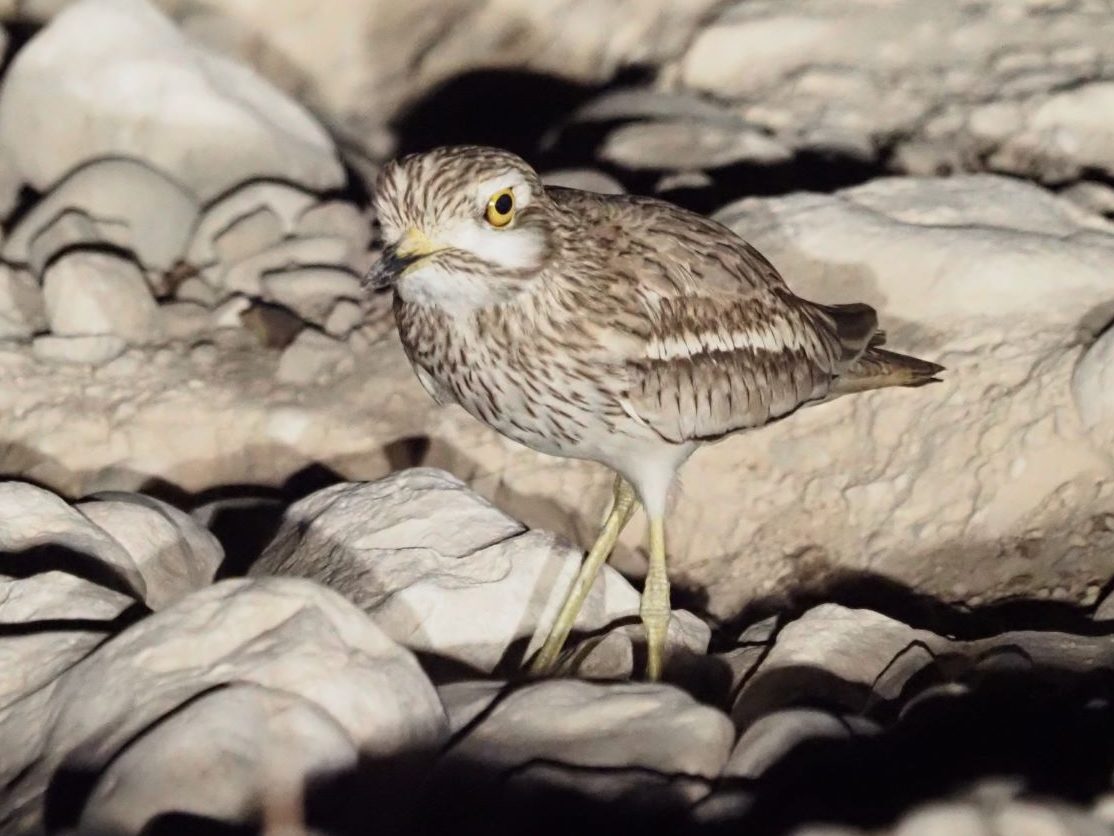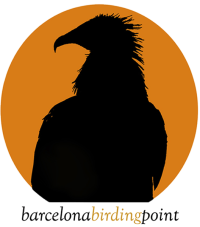Oman Birding Tour 2022 Trip Report
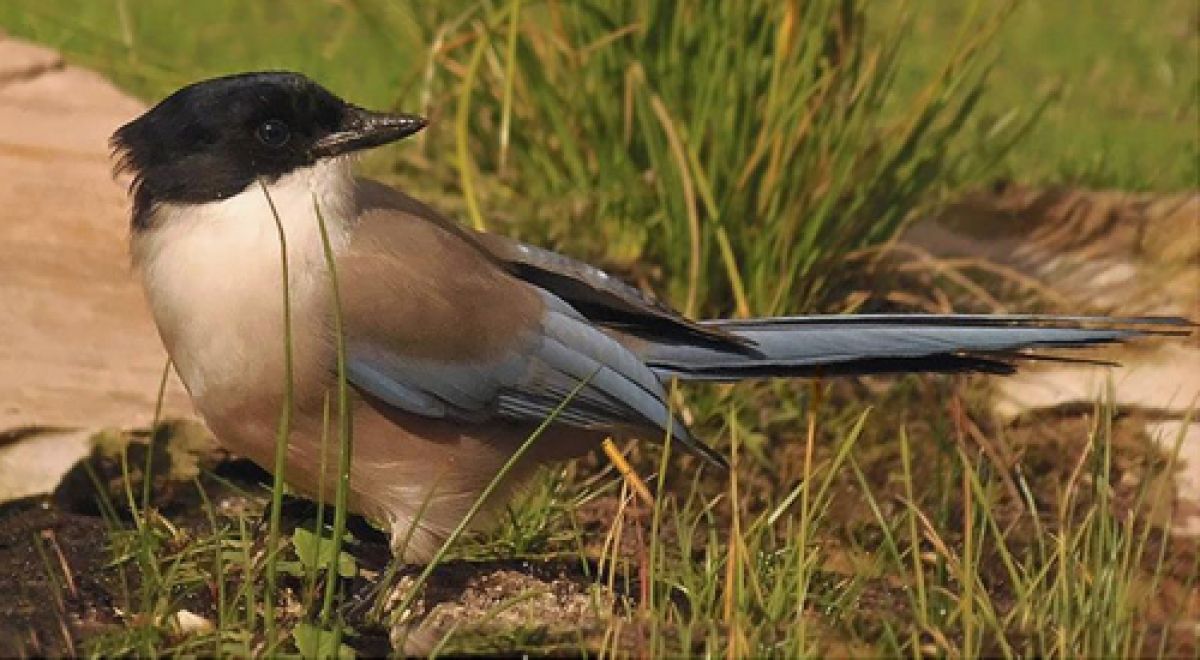
- Dates: January 16th/26th, 2022
- Tour participants: 3
- Species seen: 208
Day 1. After a long flight the day before, our small group had a nice breakfast before exploring the hotel grounds. Common Mynas were everywhere, as Laughing Dove did. A five minutes transfer allowed us to visit the Al Ansab Lagoons, always a pretty interesting place.
Here we did have a first contact with several of the common species in Northern Oman including Grey Francolin, Indian Silverbill, Delicate Prinia, Purple Sunbird, Arabian Bee-eater as well as Red-vented and White-cheeked Bulbuls.
Once there we were informed that the area was having the access limited due to recent rains, so our visit limited to the Eastern lagoon. There were several Common Snipes in the area, feeding along the shores along with Common Redshanks but also 2 Marsh Sandpipers that were really celebrated in the group. Among the ducks, Pintail was having good numbers this year, and so it was Eurasian Teal and Northern Shoveler. 16 Greater Flamingoes were providing a exotic note while we were suprised to find a small flock of 4 Gadwalls, a rather scarce species in Oman.
Our visit to Al Ansab was shorter than usual, but we do still managed to get a pair of bonus birds; the first Greater Spotted Eagle of the trip and a Clamorous Reed Wabler skulking inside the bush.
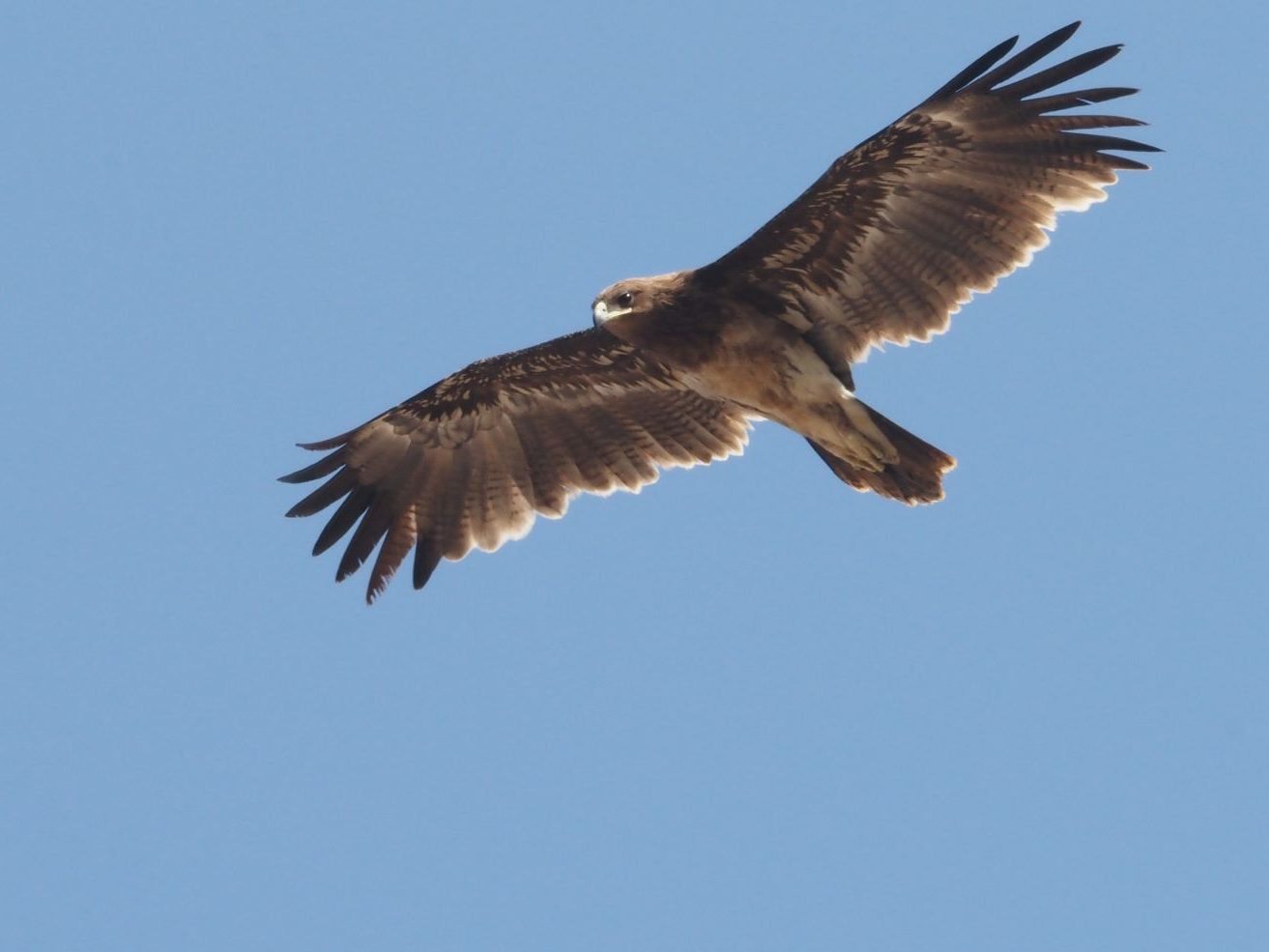
Once we leaved this lovely Nature Reserve, we drove a few miles to explore a well known corner for waders, terns and gulls. A short walk in the area allow us to see a long list of species, including several good views on Lesser Sandplovers with useful comparitions on size and structure with local Kentish Plovers. Western Reef Egrets were really common, especially in its dark form, but including also some lgihts. Here we did also find several Little Stints, and a roosting flock of 50+ Black-tailed Godwits. A Western Osprey was also roosting in the channel itself, surrounded by tens of Dunlins and some Temminckˋs Stints. Greenshanks and Redshanks were also common. We walked the channel down to the see, enjoying this good variety of waders. 2 terns were roosting along with them, and we found out that they were actually White-cheeked Terns! A nice find of a quite scarce species.
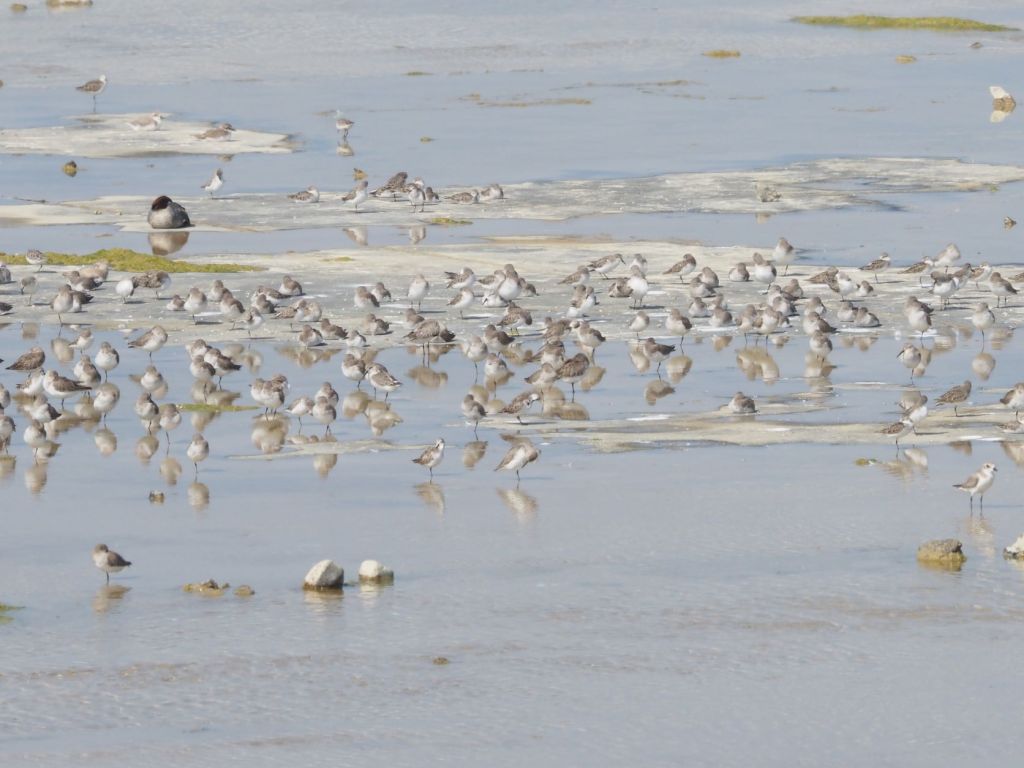
We were already really close to the sea shore, and here we found the first of many Oystercatcher and Ruddy Turnstones. A pair of White-winged Black Tern just landed upper in the channel, joining a mixed flock of waders. Here we also found another Marsh Sandpiper, and we could compare it with both Greenshanks and Redshanks. We were just scanning all this amazing activity when 2 Chestnut-bellied Sandgrouses appeared from nowhere and stop in our path, only 100 metres away from us. Carefully, we approach them and we all enjoyed amazing views on both the male and the female!
A further scanning of the area and sea shore produced a lot of more species: Frist views on both Heughlinˋs & Steppe Gulls, 3 adult Caspian Gulls, and first views on pass-over Sooty Gulls. Still, what our clients celebrated more was the change to compare Great Crested, Lesser Crested, Caspian & Sandwich Terns all together in a mixed flock. A wonderful way to find our the differences between them!

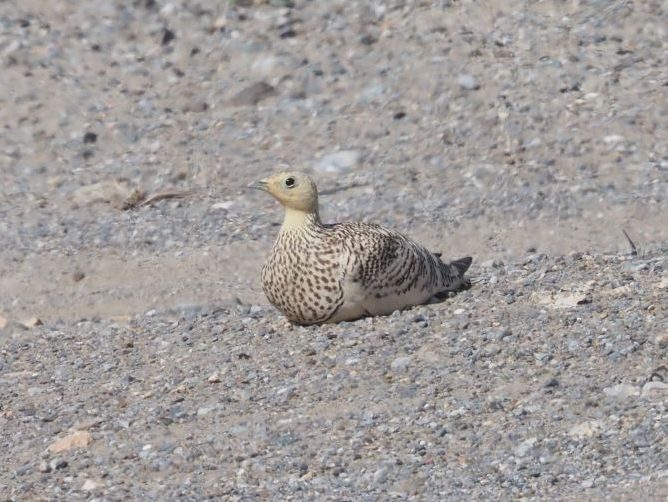
We still had some time before lunch so we drove a bit until the Natural Reserve, a small dot of open Acacia thornbush in the middle of the city. The area was having a big density of both Indian Silverbills and Purple Sunbirds. Arabian Bee-eaters were also feeding all around, providing excellent views. But all became nothing when a gorgeous male Long-tailed Whydah flied over us showing out its amazing tail, joined by another small bird that we could not identified. The bird flied over and took us some minutes to refind the bird, nicely showing right in the top of one Acacia and joined by several Silverbills. This incredible birds was not only causing a big excitation in our group of birdwatchers, but also in the birds around.
The Long-tailed Whydah is a bird in the __ family, that inhabits a variety of Acacia thornbush landscapes, gardens and open woodlands in the Horn of Africa, and East Africa.
This is probably the first record for this species in Oman. A former record of Whydah exists in Oman, as a male Pin-tailed Whydah was seen in Salalah some years ago. Still, the bird was finally considered as an scape. In this case, even if it so, it was a sight and we can count ourselves as lucky to have enjoyed this amazing bird. Really happy after enjoyed such a wonderful beauty, we still spent some more time in this tiny natural park, and we were granted with good views on 2 Bonelliˋs Eagles circling along with 2 Brown-necked Ravens.

It had been a great morning, and after such a successful time, we drove back to our accommodation for an early lunch. After enjoying the Omani cuisine, we did drive throught the packed Mascate traffic to arrive to Al Qurm Natural Reserva and park. Here we got both Squacco Heron and Indian Pond Heron, Little Grebe, Puple Herons, a lonely Tufted Duck male, Alexandrine Parakeet and excellent views on Indian Rollers that were chasing large insects from the park lights.
A short walk along some shaddy areas allowed us also to connect with our first Isabelline Shrike while 2 Sedge Warblers were calling from a small patch of reeds. Some waders were also noted, including Temminckˋs Stint, 2 Green Sandpipers and Eurasian Curlews. Pallid Swifts and Pale Crag Martins were patrolling the sky in the search of insects, while flocks of Bulbuls were feeding brambles. 2 Garganeys were also spotted in a small pond along with 1 male Mallard (probably the only one along the whole trip). To end this really intense first day, we chose the mouth of the Al Qurm Natural Reserve, where we enjoyed more views on Lesser & Greater Sand Plover and Eurasian Whimbrel. A good scanning of the gulls in the beach produced our only 1 Pallaˋs Gull of the trip (a 1st winter), and with the last lights of the day, we enjoyed the static beauty of a Striated Heron while fishing from some rocks.
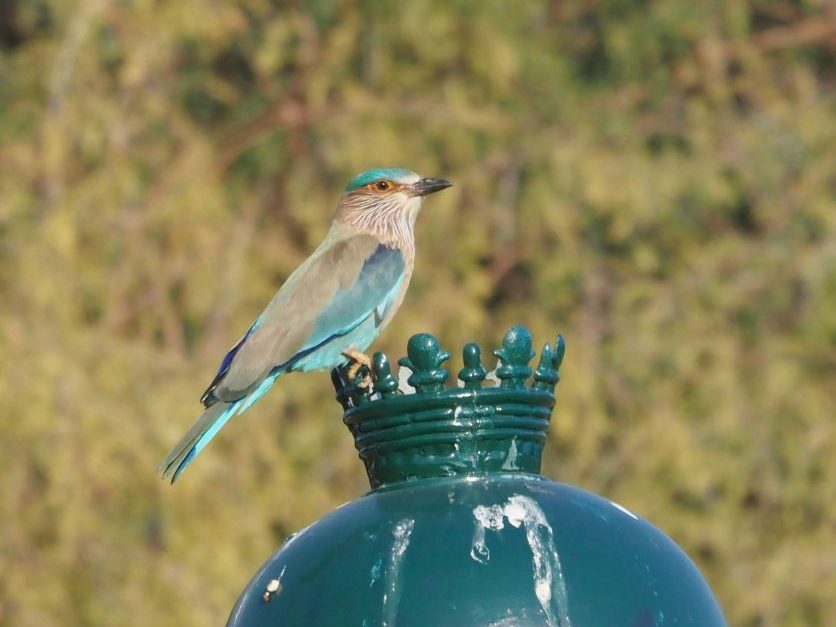

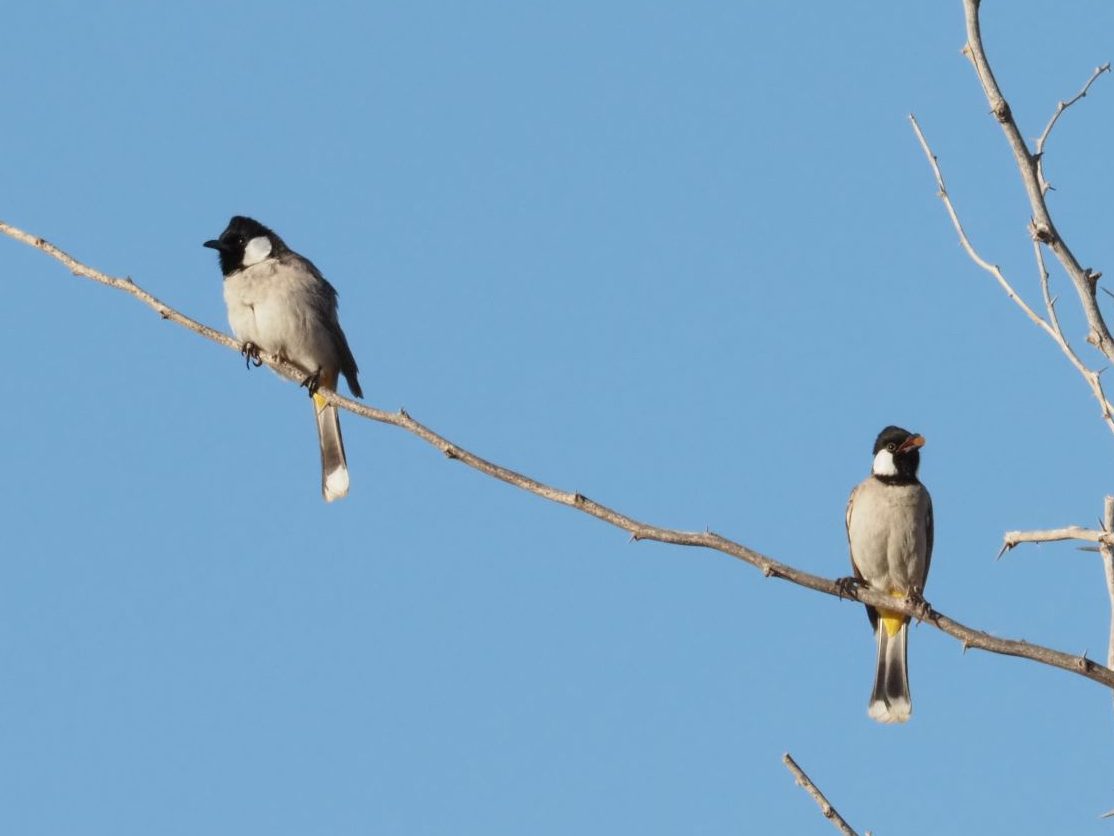
Day 2. Early morning breakfast to explore the breathtaking Al Harar Mountains landscapes. During the day we did a number of spots, exploring a good variety of corners. Our first stop was in an semi arid stony landscapes, with scatered Acacias all around. Here we got an amazing number of Striolated Buntings, a bird that can be hard to spot. Over 30 of them were seen in different flocks here! Along with them, Indian Silverbills, but also some Desert Larks and our first Long-billed Pipit. This ambient is excellent for Warblers, and we soon had our firsts Lesser Whitethroats “taking” from the trees and provinding good views. After some scanning around, something bigger appeared and soon we were all enjoying a skulking Eastern Orphean Warbler moving in the canopies. It took as some minutes to have proper views! When leaving, a lovely Persian Wheatear (also known as Red-tailed Wheatear) appreared to provide excellent views!
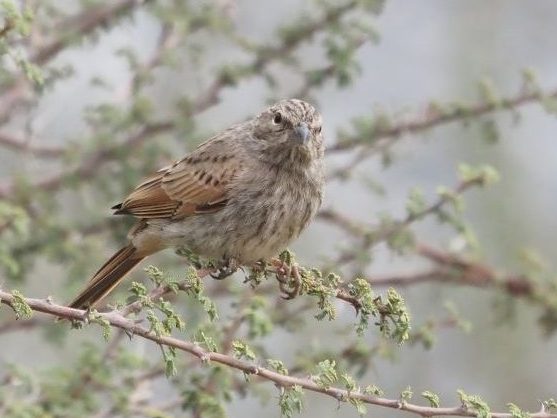
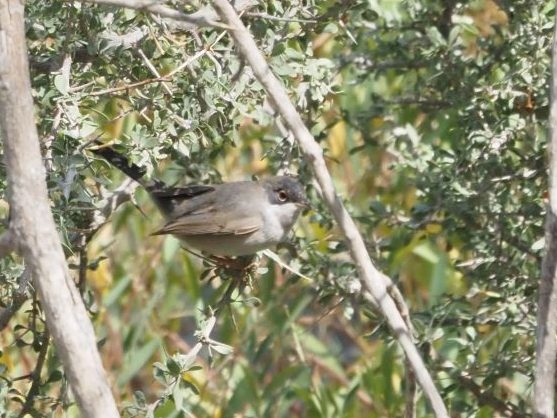
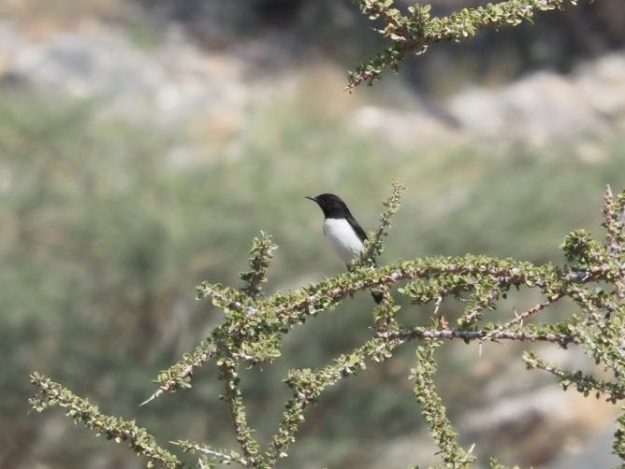
After this good start we moved to a close gorge totry to find some of the goodies living there. In our way, a Variable Wheatear appear in the top of a large boulder. Our walk inside the wady proufed soon to be a good idea. A lovely Ménétriesˋs Warbler appeared right in front of us, providing good views not only on its markings, but also in the lovely movements of its tail. It could not be more different from a Sardinian!
A further walk produced several Purple Sunbirds but also a superb Variable Wheatear and a lovely Levant Scrub Warbler that fly over us to stop a bit beyond! Happy after such a great stop, we came back to our van, where another Hume’s Wheatear was waiting for us!
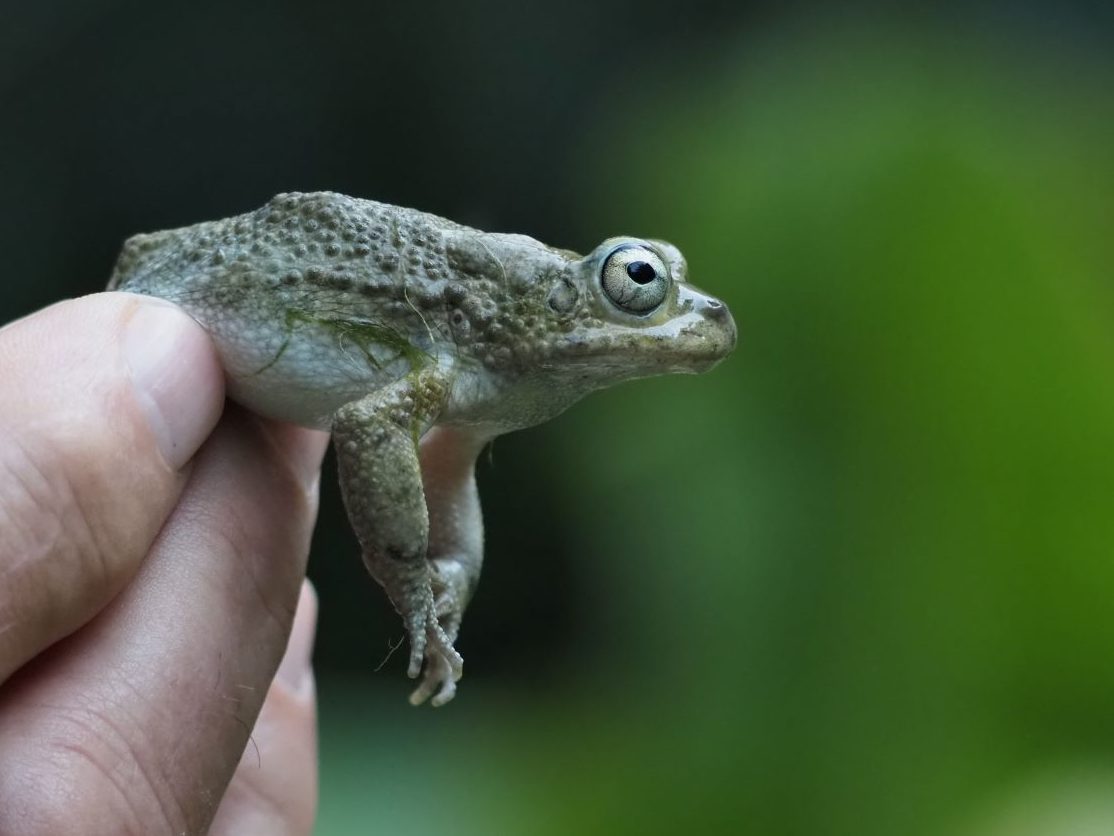
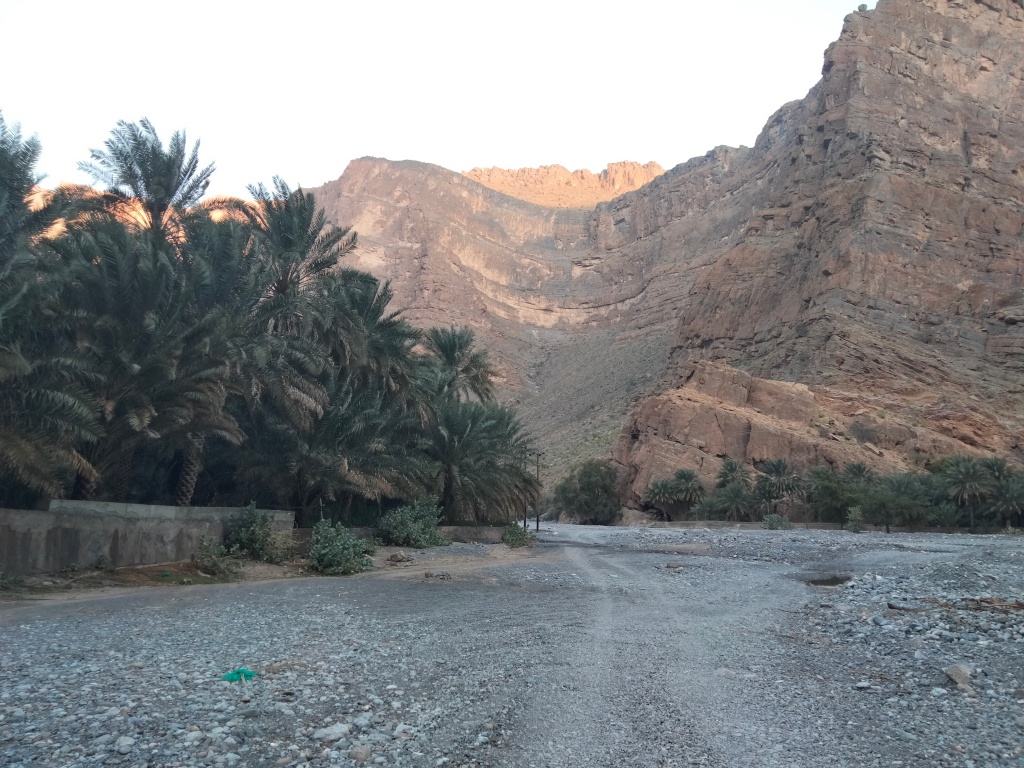
At the end of the morning the temperature raised. It was time to drive a short distance to a local restaurant to have some food and rest. The afternoon was going to be long!
During the afternoon, we explore one of the largest gorges in the Al Harar mountains. Here we were expecting to find the extremely unknown Omani Owl, that was discovered in 2004 and it is only known from this gorges. But first we were to explore some some oases that can concentrate some good birds. Just arrived we had some Lesser Whitethroats moving in the trees along with our firsts Plain Leaf Warblers. This tiny Phylloscopus breeds in Northern Iran and Western Turkmenistan so it is always a treat! The area was having good warbler activity, but not even in our best dreams we expected what was next. Suddenly, a Mountain Chiffchaff started calling in a small tree right by our side. We played the call of the bird, and it came! It showed really well the really white supercilium, that came to its maximum above the lore. Also, it was possible to see a nice white contrast in its throat. We enjoyed good views for some seconds, and everybody in the group got to see the bird before it flew off to go somewhere else. We still listened the bird time to time! This Mountain Chiffchaff was relocated and photographed by Markus Craig on February 24th, 2022.
Right when the Moutain Chiffchaff called and showed in front us, another call came from more distant canopies. I really didnˋt want to trust my ears, but it really sounded like a Humeˋs Leaf Warbler! So, after some listening we decided to get closer (the bird sounded from a quite dark corner of the oases with not a really easy access). Once there, we spent half an hour trying to see the bird. Time to time clearly heard the call, sometimes really close inside a large, dense bush. We all got views on Lesser Whitethroat and Plain Leaf Warbler in that corner, but the best we could manage on this Humeˋs Leaf Warbler was a poor view on the wing bar…

Back to the open, the first Grey Wagtail of the trip apperared in the most open area of the oases. It was time, anyway, to move to the best corners for owl. We did a good wait, and despite scouting the walls we were uncapable to have any contact with such a mysterious bird. Instead, we got good views into Blue Rock Thrush and 2 Egyptian Vultures flying by the large walls, but probably the best was the good views on 3 Lappet-faced Vultures that soared above our heads in lovely afternoon light.
The day had been great and full of surprises, but it was now time to go our accommodation and get some rest.
Day 3. The first was the day of our transfer from the North of the country to the Dhoffar region, in the far South of Oman, and neightbouring Yemen. It is a long drive that, surprisingly, can be really productive in term of birds.
After the successful finds of the afternoon before, we decided to go back to the that oases and try to have some pictures in these really scarce Warblers (both rarities for the country). We did spent about 2 hours in the area, but we were uncapable to do so. Mountain Chiffchaff was showing brief but nicely in a tree before flying away for over 150 metres. It called sometimes and we were all satisfied with that. The Humeˋs Leaf Warbler was much worst as it only called twice and no one in group managed to have any views on the bird.
A bit disappointed after this unproductive stop we kept going with our long transfer South to Salalah. We didn’t have any proper birding until mid-day, when we did stop for lunch in Qitbit, in the abandoned grounds of a closed hotel. After our picnic we enjoyed a short walk in the shade. There were several White Wagtails around, and we had our first hammomedri Lesser Whitethroats of the trip, with their characteristic, Wren-like calls. The grounds were rather low in term of birds but our short walk was still providing us with a pair of surprises, a Song Thrush came out from the bush, a Great Reed Warbler was moving inside a small reed patch in the grounds (the only one Great Reed along the trip) and a surprising Western Barn Owl flew out from a palm tree and gave us good views for a while. It was a big surprise to find out a Barn Owl in such a small orchad in the middle of nowhere!

A bit more of driving allowed to explore one of the many — farms in this part of the desert. We are about 2 to 3 hours of driving West of the Dhoffar, and here there is water in the subsoil, allowing these kind of farming. We different areas, all of them having good numbers of both Desert and Isabelline Wheatears. Here we also had our firsts Tawny Pipits and Greater Hoopoe-Larks of the trip. Small flocks of Brown-necked Ravens were all around, while tens (yes, tens) of Eurasian Kestrels were hunting the very common insects in the place. Just arrived, a flock of a very promising larks were moved out from our location by a Kestrel so we just came closer to the area and wait. There were several Yellow Wagtails, but also Tawny Pipits and Crested Larks. Large flocks of Sandgrouses were moving in the distance, mainly Chestnut-bellieds, and some of the moved closer, including a pair of Spotted Sandgrouses that flew right above our heads, providing excellent views!
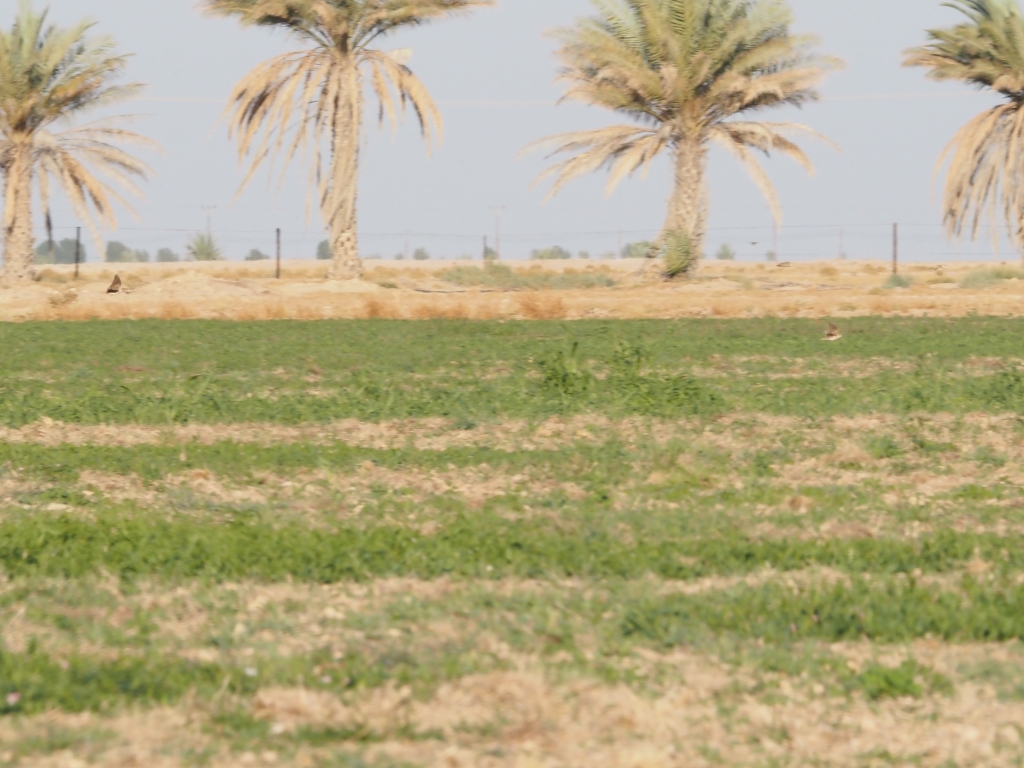
Some minutes after our waiting was regarded as a lovely flock of 26 Bimaculated Larks just came back to field to feed on the ground. They allowed excellent views in flight, showing their brownish underwing and tiny, rounded tails. For me, far more used to see Calandra Larks than Bimaculateds, it was a pleasure to have such a good views on this species! Moreover, when the flock flew over, 1 Arabian Lark was seen flying along with them, and it could be identified thanks to the tail pattern. The meadows still provided good views on 4 Common Snipes, several Western Marsh Harriers and distant views on 2 circling Pallid Harriers.

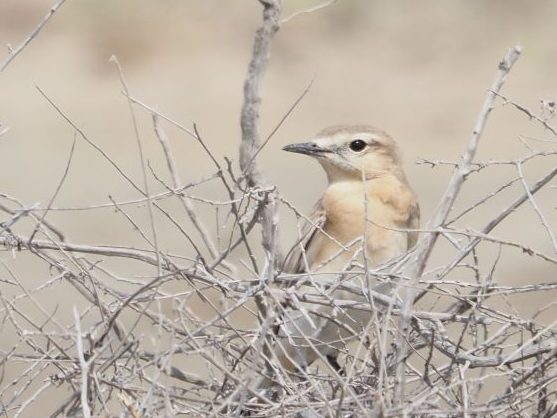
Leaving the area, we still enjoyed more views on Desert & Isabelline Wheatears, before going back to the main road and drive the last 2 hours until Salalah, where we did arrive before dinner time.
Day 4. Our first day complete day in Southern Oman provided an amazing array of birdlife, including some of the finest Dhoffar specialities and a good variety of the wildfowl overwintering in this stunning region.
Our first stop was at one of the best known areas for variery and amount of passerines. Here we find an open forest, with several fig trees right at the footstep of the impressive Dhoffar mountains.
Right after leaving the van we got some of the first birds of the day. In the open plains around Salalah we got our firsts Black-crowned Sparrow-Larks, a lovely flock of 3 males and 2 females feeding on the ground along with Isabelline Wheatears. Nearby, flocks of Cinnamon-breasted Buntings & Rüppell’s Weavers were fiding in the area along with African Silverbills and a pair of beautiful Blackstarts. After enjoying these wonderful birds we just walked 50 meters before a “taking” called our attention. Soon, we disovered a Eastern Olivaceous Warbler moving up in a thornbush, joined soon by a Lesser Whithethroat and handsome Graceful Prinias! Things were happening fast, and a pair of minutes later we found a Long-billed Pipit walking among the trees while the firsts Arabian Sunbirds were showing up in the trees around. In the distance, a Turkestan Shrike appeared, and we were lucky to move that way, since 50 metres away from the Shrike a superb Arabian Chameleon was taking a sunbath! We all enjoyed amazing views on the Chameleon, that was really exposed to any potential predator!
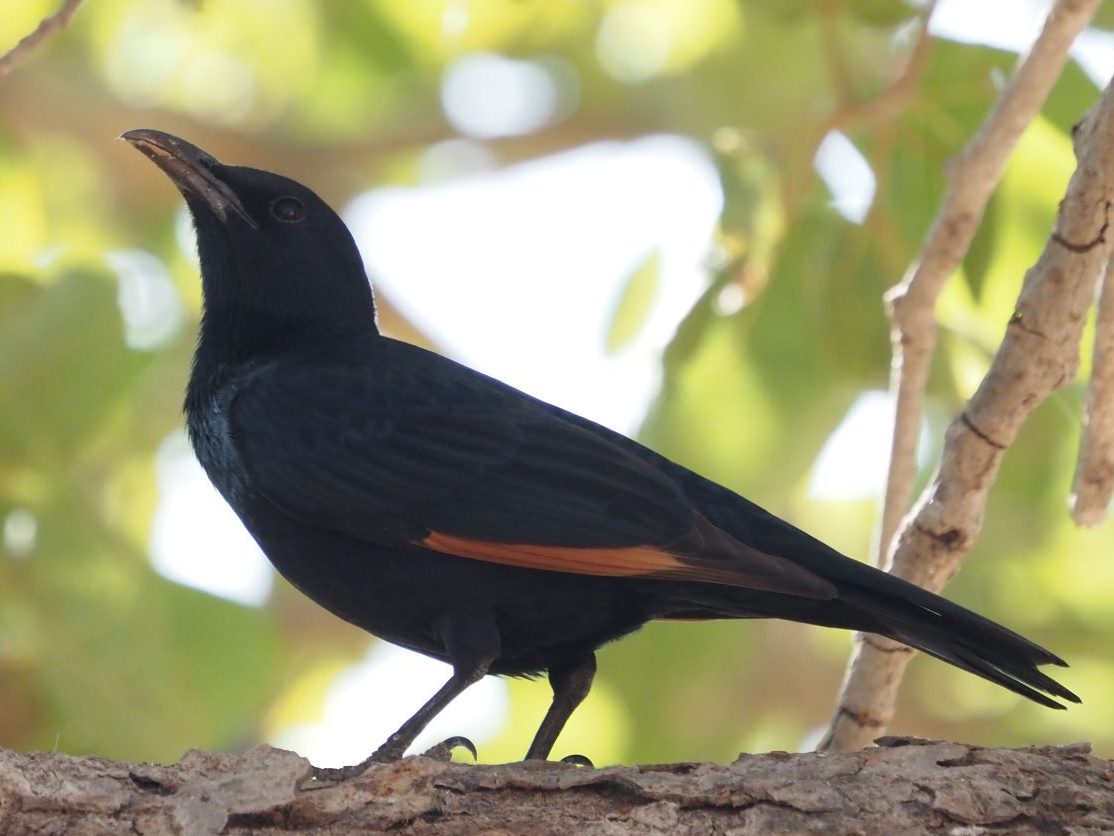
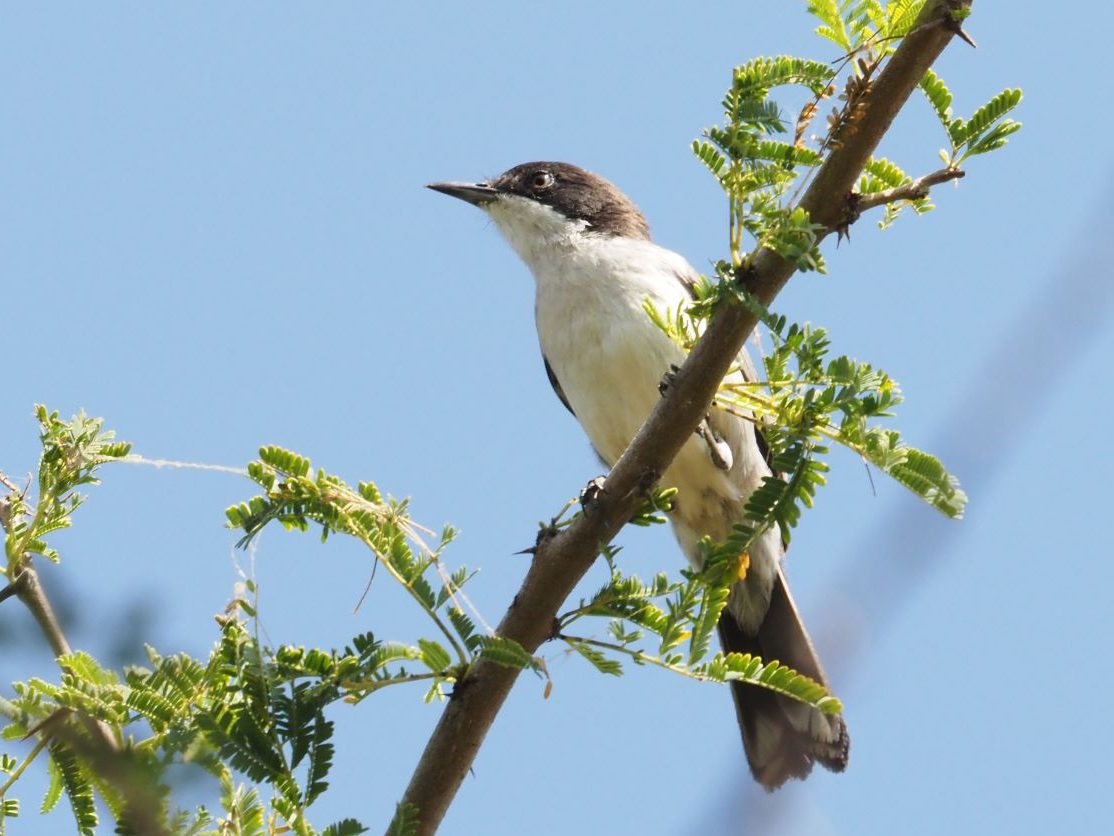
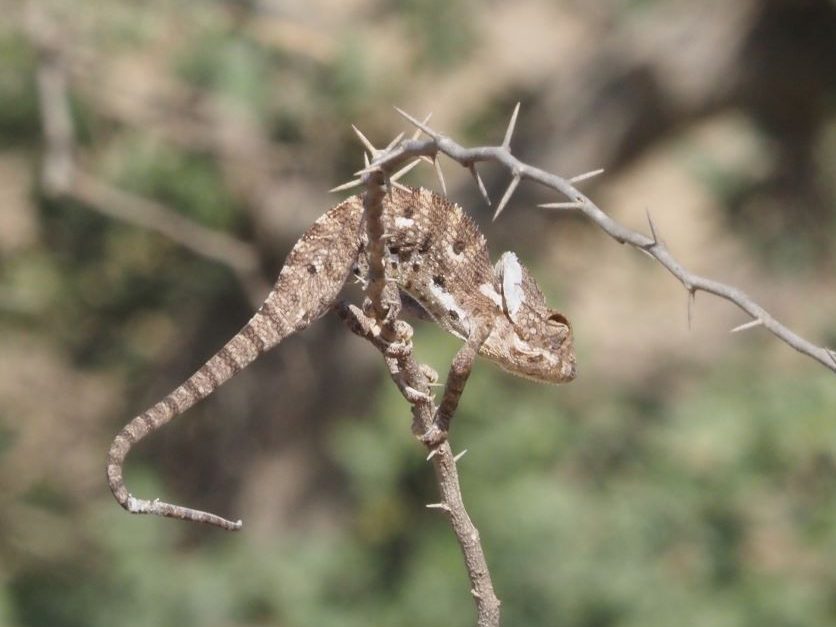
After such a lucky finding we came back the main woodland. Flocks of Tristam’s Starlings were coming into the fig trees, joined by White-spectacled Bulbuls and some superb African Paradise Flycatchers. A very short walk produced then the first of up to 7 Arabian Warblers that morning. It took us some time to enjoy a full view on this individual, but it was worth the time invested not only because of the great views at the end, but also because a small break in our particular fight with this Arabian speciality produced great views on a Pale RockFinch that simply arrived at the top a small tree next to us! That bird created a huge wave of happiness in the group, since it is a really scarce species, normally relicted to the far Nort West corner of Oman, with scattered sights anywhere else!
Still more activity. Even before leaving the Arabian Warbler, another great bird appeared. A black and white, long-tailed bird was moving 50 metres away in the lowest part of the trees. Yes, it was a female Masked Shrike! Well, we did move little to enjoy this masterpiece of the shrikes. After spending some minutes admiring such a pearl, we just realised that we were right beside our car! Everything happened in a 150 metres cercle around!!
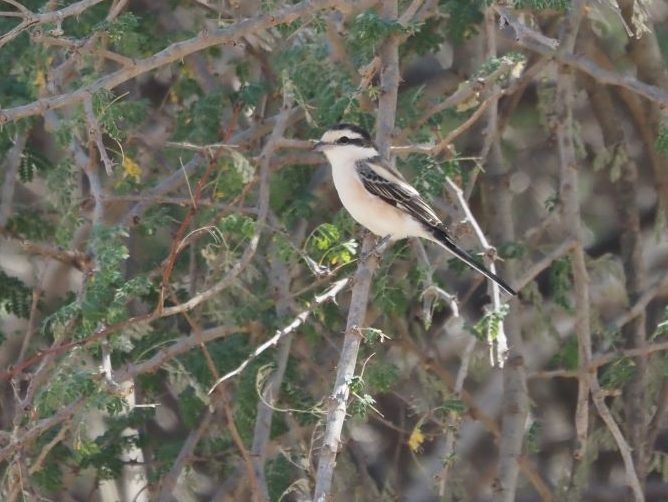
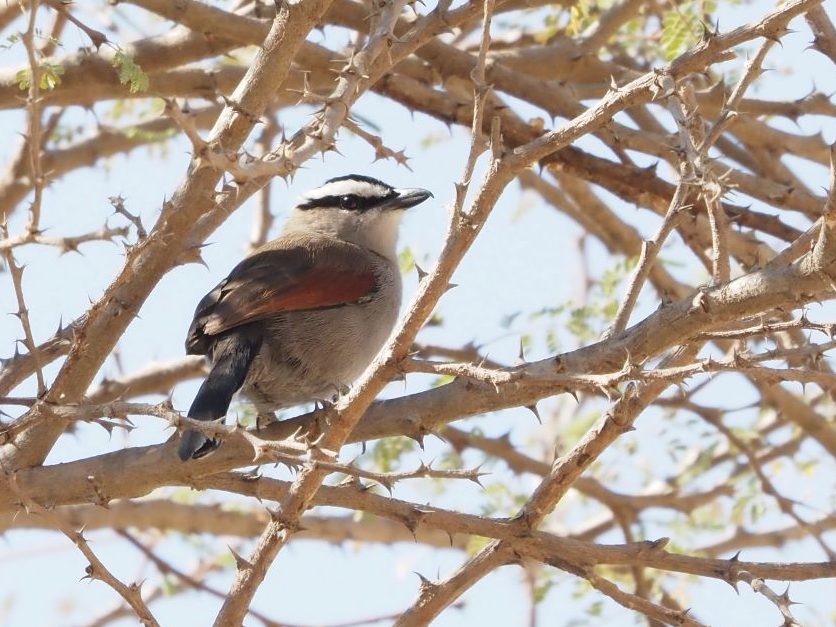
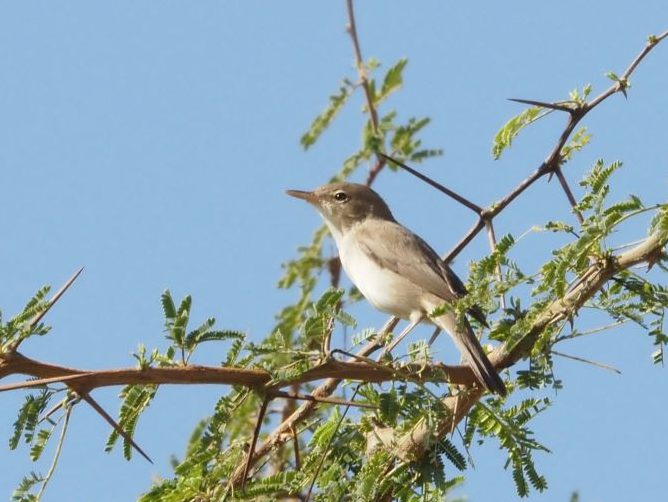
Well, this time we took it seriously to go a bit beyond. Once we were about 200 metres away from our car, a new set of species appeared. An (Arabian) Black-crowned Tchagra just appeared from the tree next to us to offer us great views. Here, Green Sandpiper & Common Sandpipers were feeding in the stream, along with flocks of Tristam’s Starlings, African Silverbills and Buntings. 4 Common Snipes flew up from a really muddy corner, and a short exploration of the area produced a lovely Pin-tailed Snipe that flew up, calling in flight, and showing its very dark underwing. Bingo!
Here the area becomes shady, and African Paradise Flycatchers take over the place. 5, 6 individuals chasing flies and other insects. Bulbuls were everywhere, but also 2 Hoopoes and 1 Eurasian Wryneck was moving along with them!
Finally arrived to the proper corner, and while explaining how to tell apart the call of the target here, some birds starting to chirring over our heads. And there were there, 7 Arabian Grosbeaks feeding right above our heads!!!
Well, little can be said to explain the emotion of the moment. We had 2 of them feeding at only 5 metres away. This is a scarce, extremely difficult bird to find, and we were granted with walk-away views on them! The birds were feeding in green berries, and for the 25 minutes that we spent with them, they never stopped feeding them!!
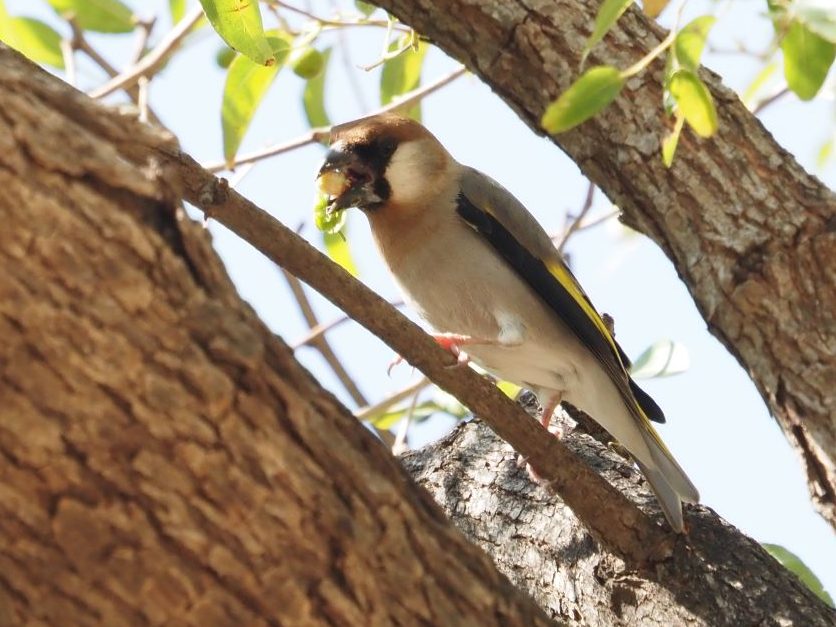
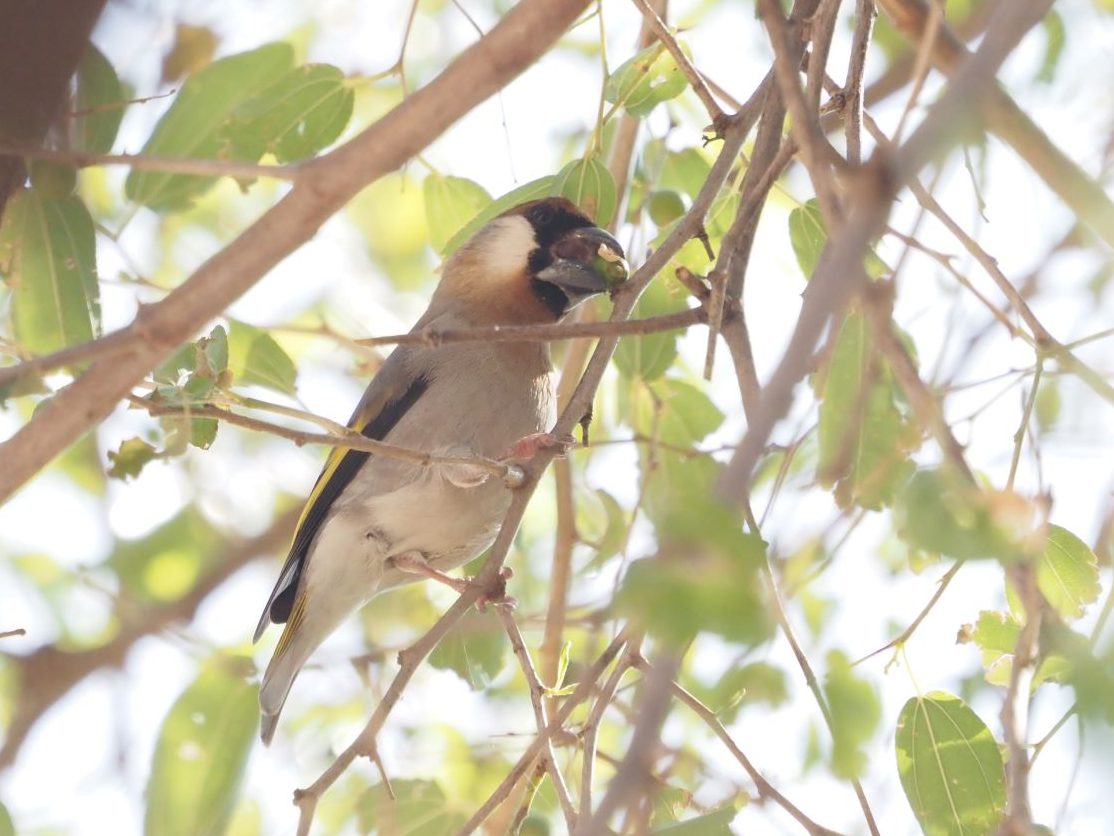
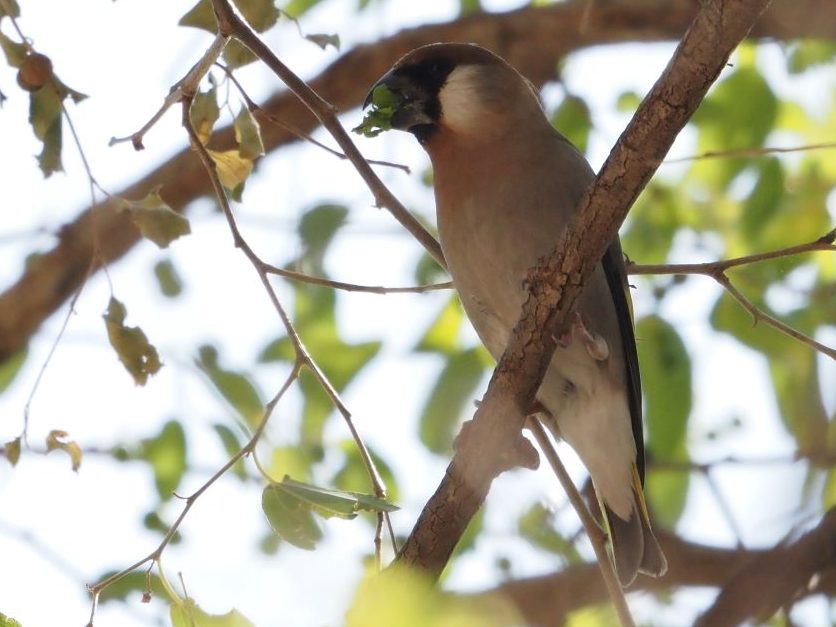
Well, that was an amazing way to finish our first stop in the Dhoffar. It was only 10:30 in the morning!!!
Second stop of the morning, this time to explore a small coastal wetland, one of the many along the coast around Salalah. Not a huge amount of birds but still got our firsts views on Citrine Wagtails in the tour, plus 3 Pacific Golden Plovers, another Turkestan Shrike, several Western Reef Egrets and a majestic fulvescens Greater Spotted Eagle, a scarce form of this wonderful raptor that shows creamy wing and body coverts, and that recalls a compact Tawny Eagle! But the best bird in this spot appeared in our way back to the van, when a superb Richard’s Pipit just came out the wady to stop on a branch some 20 metres away from us! After staying there for half a minute, it flew over to stop on hte top of a close cliff. Another bird that was really celebrated in the group!!
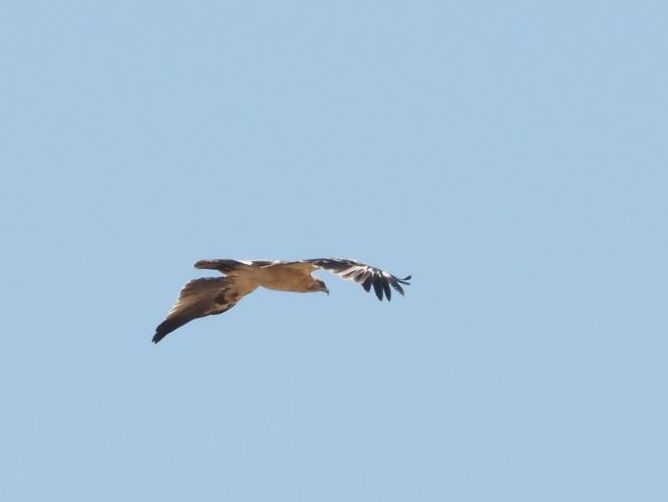
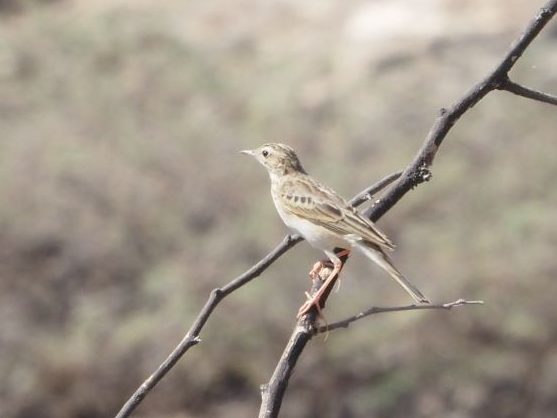
For our picnic, we went to a nearby wooded spot, where we had a pleasant brise and flocks of Abyssinian White-eyes moving around. It was warmer than usual in this season, so we agreed a short break in our accommodation and enjoy a good rest.
In the afternoon, we visited another wetland, one of the best around Salalah actually. There, in a lovely afternoon light, we enjoyed a long array of species. 200+ Glossy Ibises were feeding and moving in the river mouth. Around, small parties of waders (Ruffs, Black-winged Stilts, Black-tailed Godwits, Temminck’s Stints and Dunlins) were also feeding while 100+ Greater Flamingoes were lighting the river mouth with its colourful plomages. Among the Glossy Ibises we foung our only Intermediate Heron of the trip, and also a lovely juvenile African Spoonbill, a good ratiry in Oman!! About 40 Garganeys were also present, as so they were 3 Eurasian Wigeons and several Common Pochards. An accurate scanning of the area revealed 3 Ferruginous Ducks and 7 Cotton Pygmy Geese! In the shoreline, Terns and Gulls were starting to concentrate: Heuglin’s & Steppe Gulls mostly, but also 2 Caspian Gulls. We also got close views on Caspian Terns resting along with Slender-billed Gulls (always shocking to see that they are as big as these lovely gulls!), and 3 White-winged Black Terns + 2 Gull-billed Terns were also noted. It was already late afternoon, and dozens of House Crows and some hundreds of Common Mynas started to concentrate on its roosting site, a densed vegetated island in the river mouth. Without doubt a great way to end our first day in the Dhoffar!
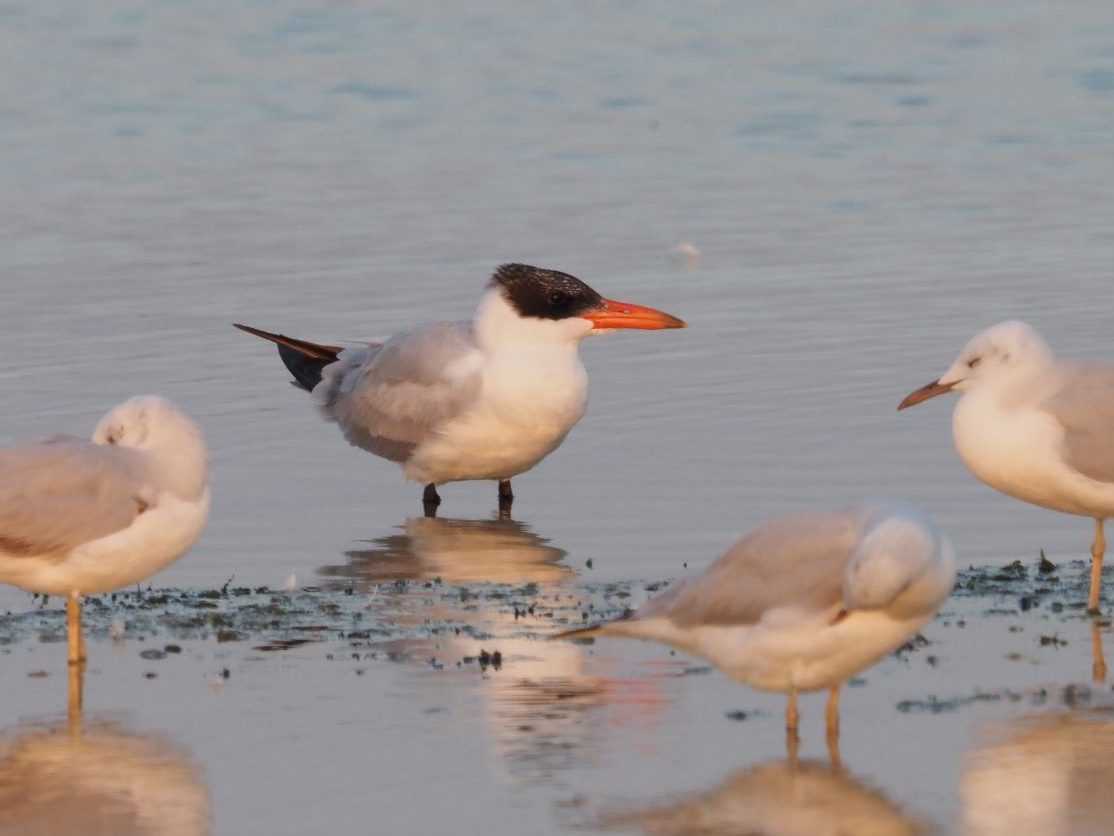


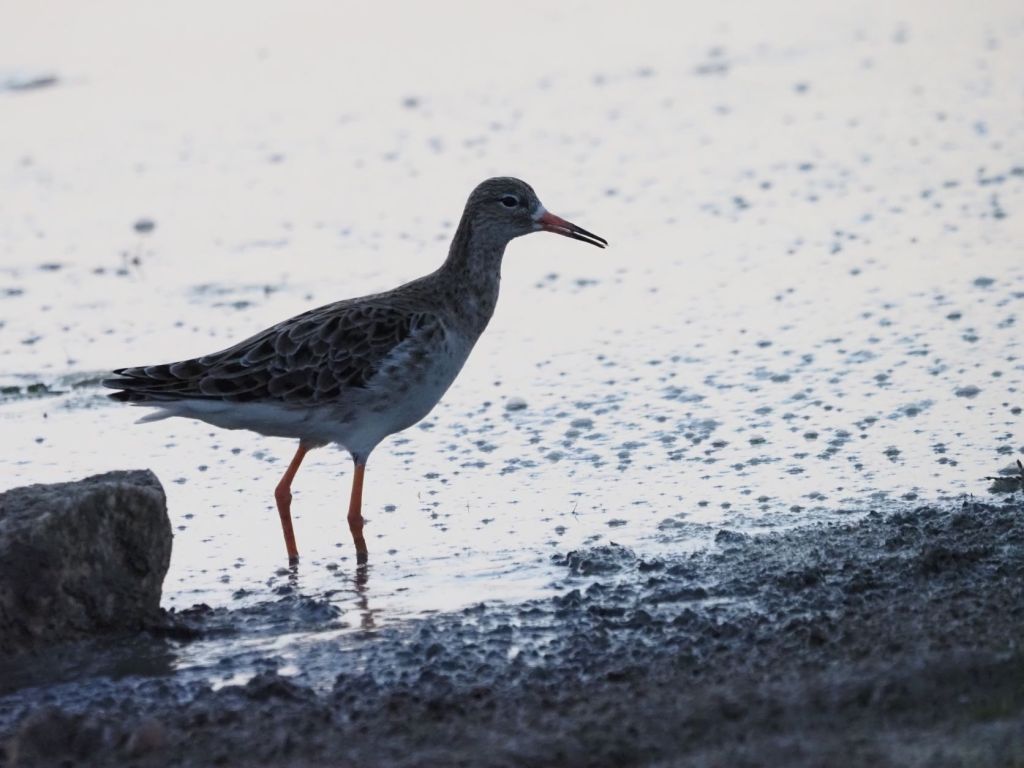
Day 5. Back to the desert. After a gorgeous 4th day, this day we faced an early start to explore the desert in search of the good specialities living in the oases. The day was ruff and cold (for the desert startards) with several clouds and some wind. A wind that will join us for the next days and make our journey a bit more difficult, and slightly less productive.
Our morning visit to Mudday was quite productive. Early in the morning, we enjoyed some potential Siberian Chiffchaffs, and at least 3 of them proved their identity by calling several times. The area was not so filled up with birds as other times, but we still had some views on 2 Lesser Whitethroats and 1 Bluethroat in a tiny muddy spot. Our main target here was the mythical Hypocolius, a bird that we had seen here twice in previous issues. But despite checking all the corners of the oases, we couldn’t find any this time… However, the area was really interesting and our short walks around produced excellent views on 2 Namaqua Doves male, Blackstarts, Arabian Bee-eater and 2 superb Eastern Imperial Eagles that made the effort worth it. A further scanning revealed 4 Desert Larks feeding on the ground.
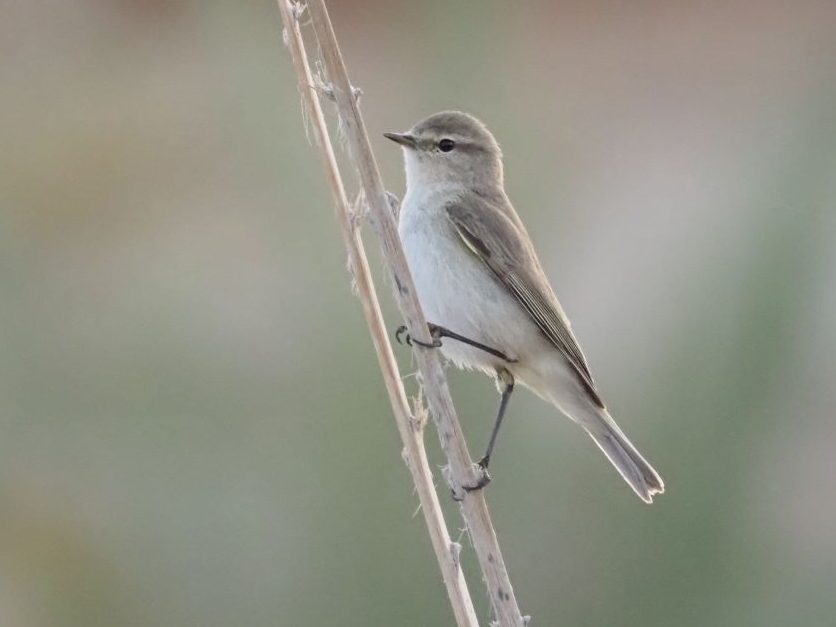
But the morning was passing and we didn’t have sign of any Sandgrouse (another good reason to explore Mudday). The weather was cold and cloudy, so we decided to take the car a prove a different spot, some miles away. Here we had more luck, a got some small flocks of Chestnut-bellied Sandgrouses flying around, and after some waiting, we got to see a gorgeous flock of 12 Crowned Sandgrouses coming to drink water into a tiny pond! Delighted after the views on the Sandgrouses (but at the same time surprised for the chilly weather and low occurrence of birds, we still moved further South.
There, we didn’t find any other Sandgrouse but 14 Sand Partridges moving in the desert that provided the group with good views while moving in the rocky slopes. A short walk around produced also our only 1 Nile Valley Sunbird of the trip feeding in Lobellias as well as an extra flock of Desert Larks!
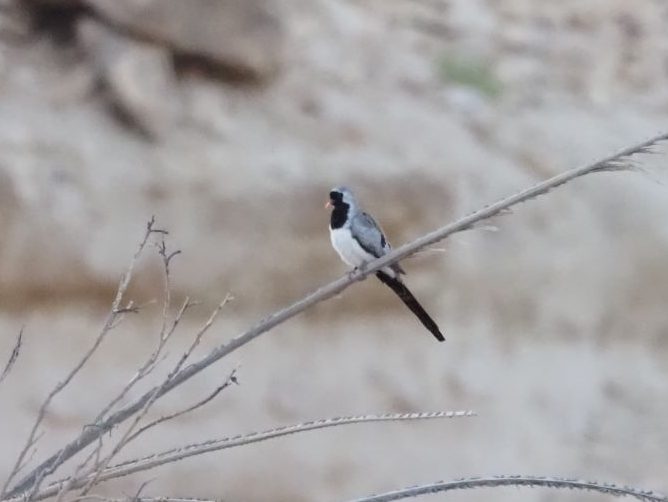
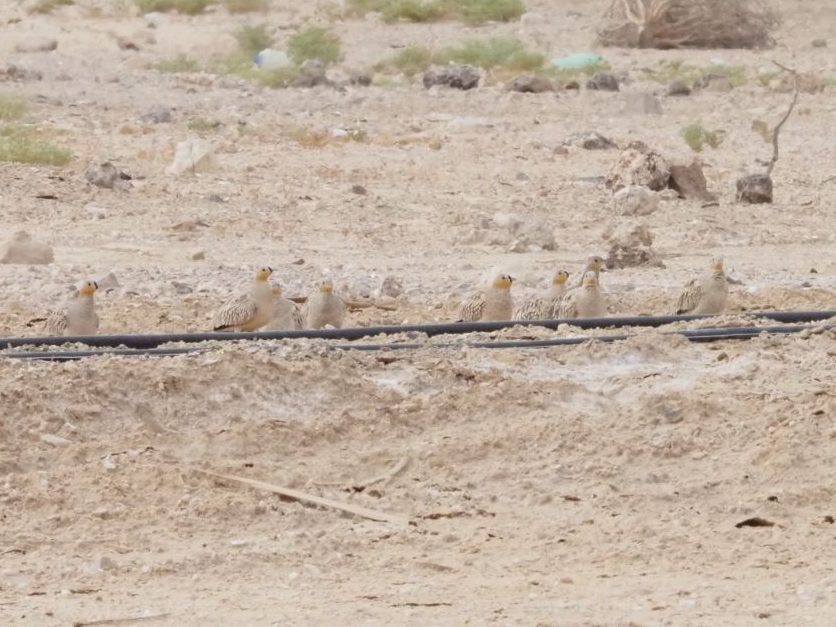
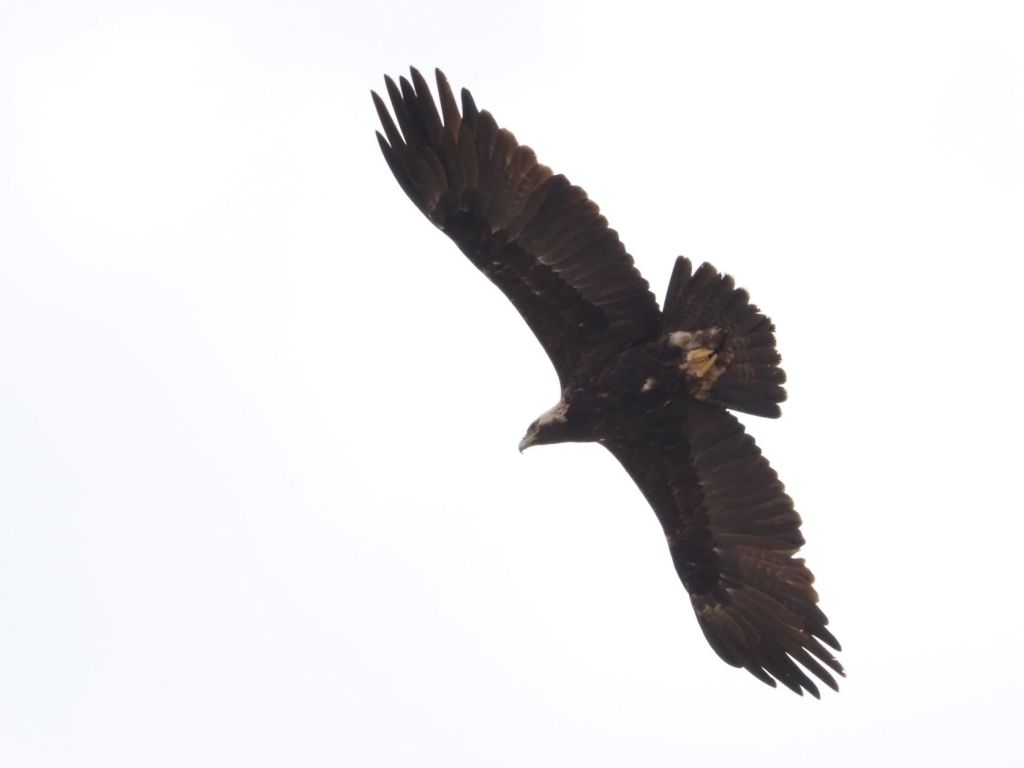

Back to Salalah, we realised how windy was in the coast. During the coming days, the Dhoffar was going to be hit by a tropical (wind) storm, with speeds raising over 80kms/hour. A metheorological phenomenom really uncommon in this part of the world. Despite the situation, we decided to explore some areas around Raysut that, surprisingly, were sheltered against the wind.
A fast exploration around the Raysut landfill produced 100+ White Storks and close views on over 40+ handsome Abdim’s Storks. Moreover, the first Steppe Eagle of the trip just flew over the van when we were enjoying the Storks! But here was windy and unconfortable so we moved to the coast to explore another river mouth. Here, after locating a sheltered corner where to set up the scope, we got a unforgettable birding session.
The river mouth was filled up with waders. Up to 15 species of them, with special remarks on 10+ Terek’s Sandpipers feeding nearby and several Lessers & Greaters Sandplovers. Dunlins, Little Stints, Grey Plovers, Eurasian Curlews, Whimbrels, Kentish Plovers, Bar-tailed Godwits, Greenshanks, Oystercatchers and Turnstones were all seen among other species. 5 Greater Spotted Eagles were sat at different corners, 1 of them quite close to us, and dozens of Gulls and Terns were in the river mouth itself. A bit beyond, a massive bird was resting in the shallow water: a Dalmatian Pelican!!! I seriously thought that we were the first to see this amazing bird (2nd for Oman?) but once in the hotel I saw that the bird was present since November…
Well, that was something to enjoyed, especially after the Pelican was moved by a Greater Spotted Eagle, and came closer to us!! We were still not recovered from this when a further scanning revealed an African Openbill in the river mouth! Gorgeous! Probably the same bird that we found here during our tour in October 2021!! It was really too good to be real. We spend quite a lot of time enjoying these birds and scanning the flocks of Terns and Gulls in search of any different species, but we only got 3 Common Terns and a flyby African Sacred Ibis (there is a tiny population of this bird nesting in Southern Oman. No scapes, but a natural expansion from Yemen and the Horn of Africa).
After some time, the dust in the air became a bit uncomfortable, so we decided to go back to our accommodation for a kind of early end of the day! Despite the wind, this was a wonderful 2nd day in the Dhoffar.

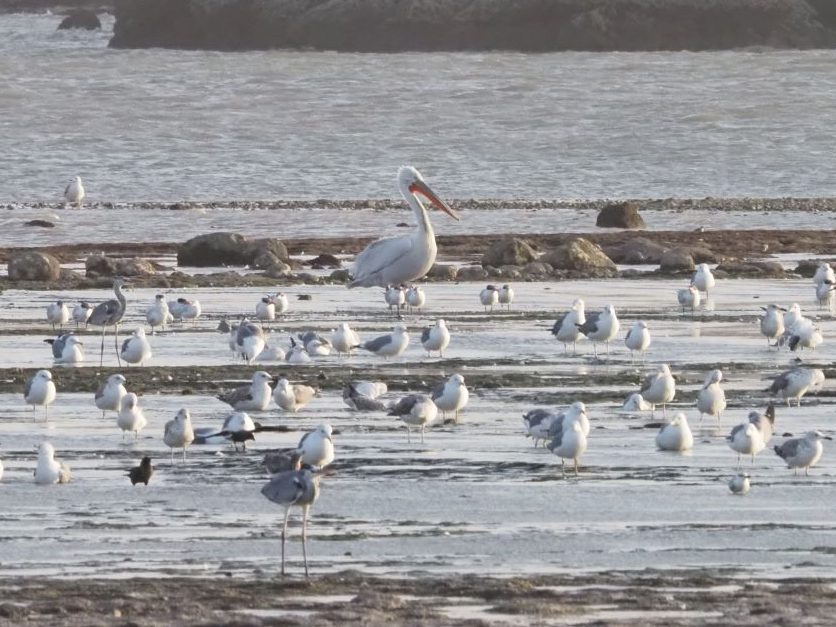
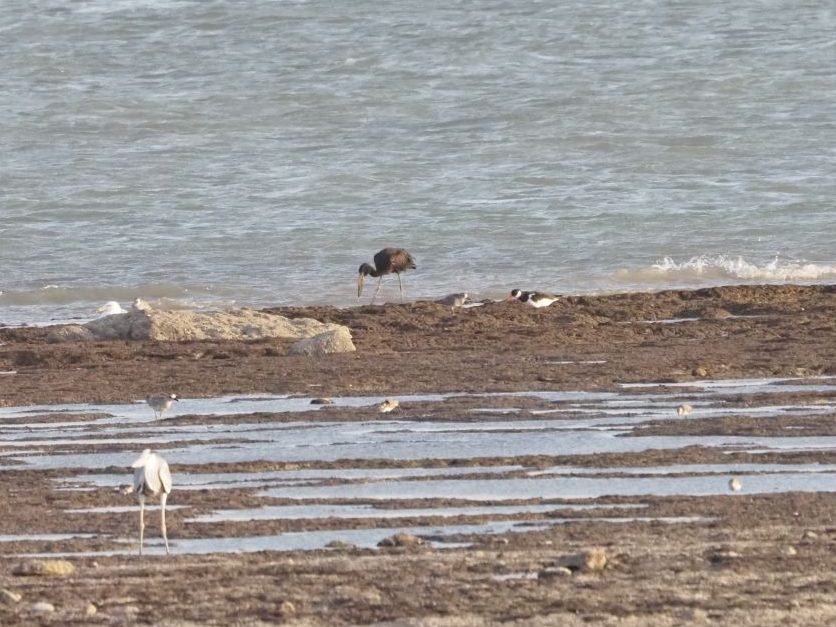
Day 6. This day our group went to explore the Dhoffar uplands. The day was still very windy, and this affected the number of birds along the day. Our first stop was to explore a well known corner in the uplands, about 800 metres high.
Here we got excellent views on Palestine & Arabian Sunbirds, but also Tree Pipits, African Paradise Flycatchers, Long-billed Pipits and really close views on a wonderful male Siberian Stonechat, a scarce overwintering bird in Oman. Here, the area is covered by large grasslands with large, scattered fig trees and small villages. The whole area is great for birds of prey and it didn’t take long before we had our firsts Steppe Eagles flying around. Soon after, 2 superb Eastern Imperial Eagles appeared in the sky followed by 1 Short-toed Snake Eagle.


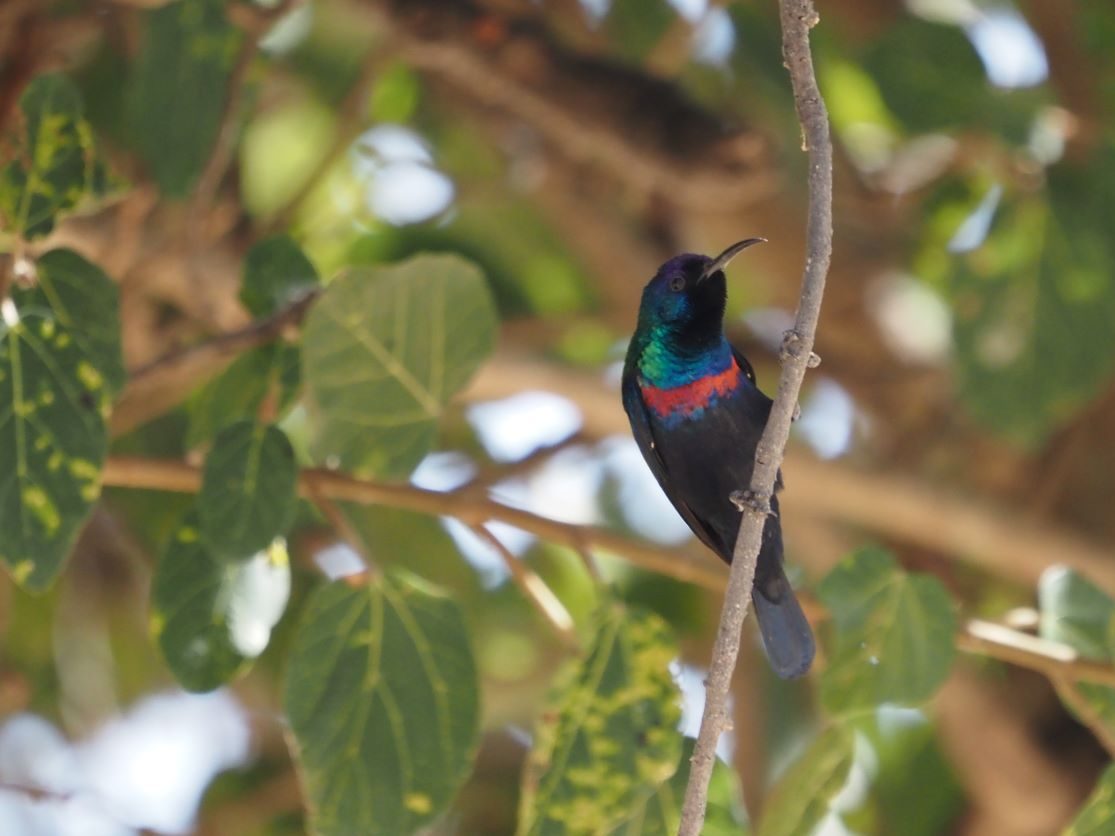
Along our short walk we also had 12 Arabian Partridges, another endemic that sometimes can be hard to find. Our second stop of the morning produced Isabelline Wheatears but also lovely views on a pair of Arabian Wheatears. Here, massive cliffs hosts good populations of Fan-tailed Ravens, and we also got excellent views on Blue Rock Thrush. One of the goals to come to these cliffs is to look for Verreaux Eagle, a large eagle living in broken terrain that has in the Dhoffar a small population.
Unfortunately we could not find any Verreaux Eagle during our visit, but got proper views on a Long-legged Buzzard, another really sought-after bird of prey in this region.
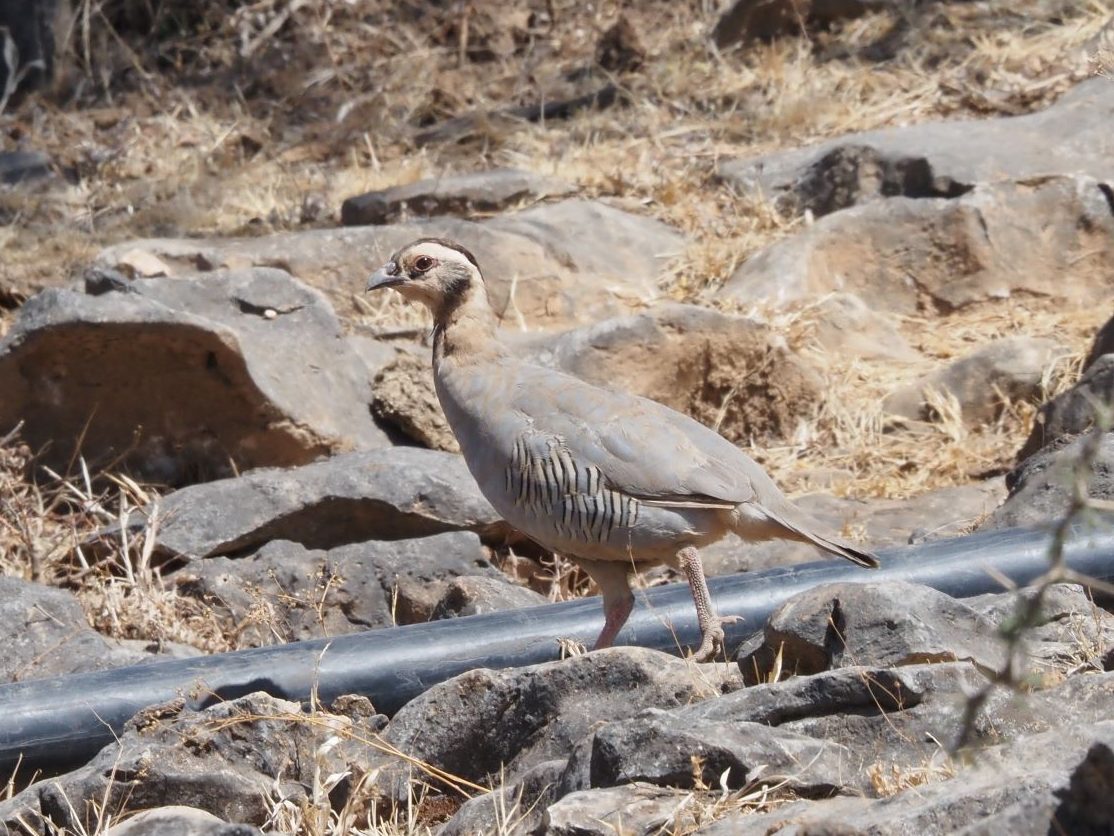

Early in the afternoon we went to explore the palm groves inmediatly around Salalah. This is a large area that also includes some interesting open corners. Again, the wind made our exploration a bit more difficult than usual but still we got excellent views on at least 3 Crested Honey Buzzards and 14 Spotted Thick-knees. En route, we also enjoyed 2 Greater Spotted Eagle and the only one Booted Eagle along the tour.
It was already bit late in the afternoon so we went back to the hills to explore a small, narrow valley. Full of hope to be sheltered against the wind, we arrived there at 16:30, and after enjoying the wonderful small gorge surrounded by a lovely decidous forest, our efforts were granted with good views on 4 Bruce’s Green Pigeons in a tree nearby. Happy after this rather unexpected reward, we moved up in the gorge until we reached a proper corner, really sheltered from the wind.
Here we all waited for the sunset, and some minutes later we were all enjoying wonderful views on 2 Arabian Scops Owls, a recent split from African Scops Owl (2004). Really happy after the a quite productive day, we went back to our accommodation for a good dinner and rest!
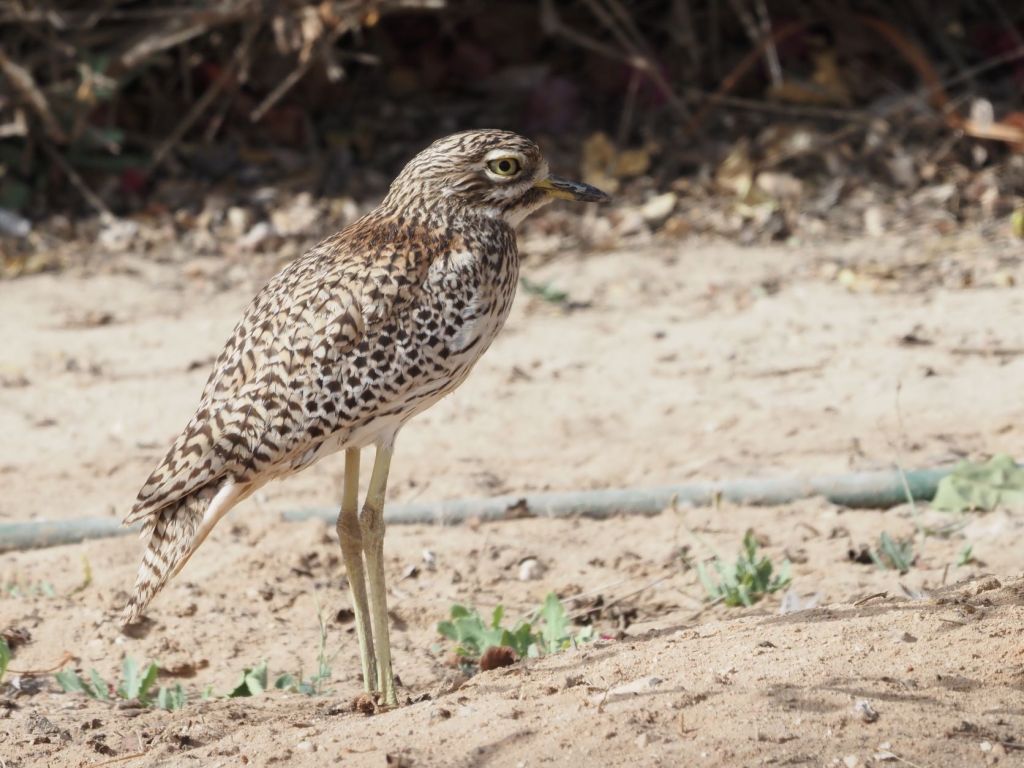
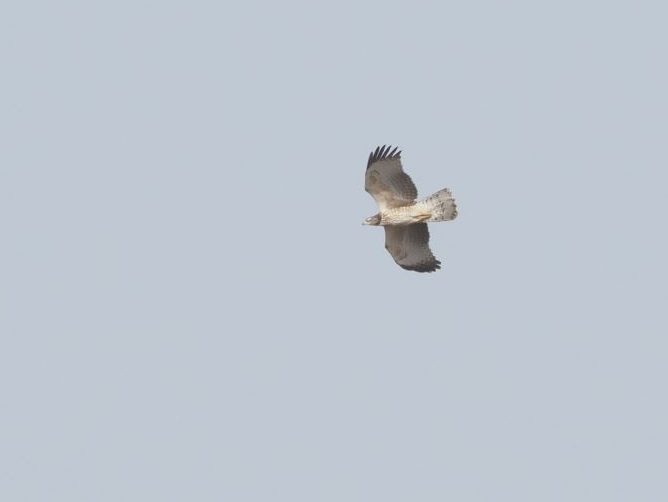
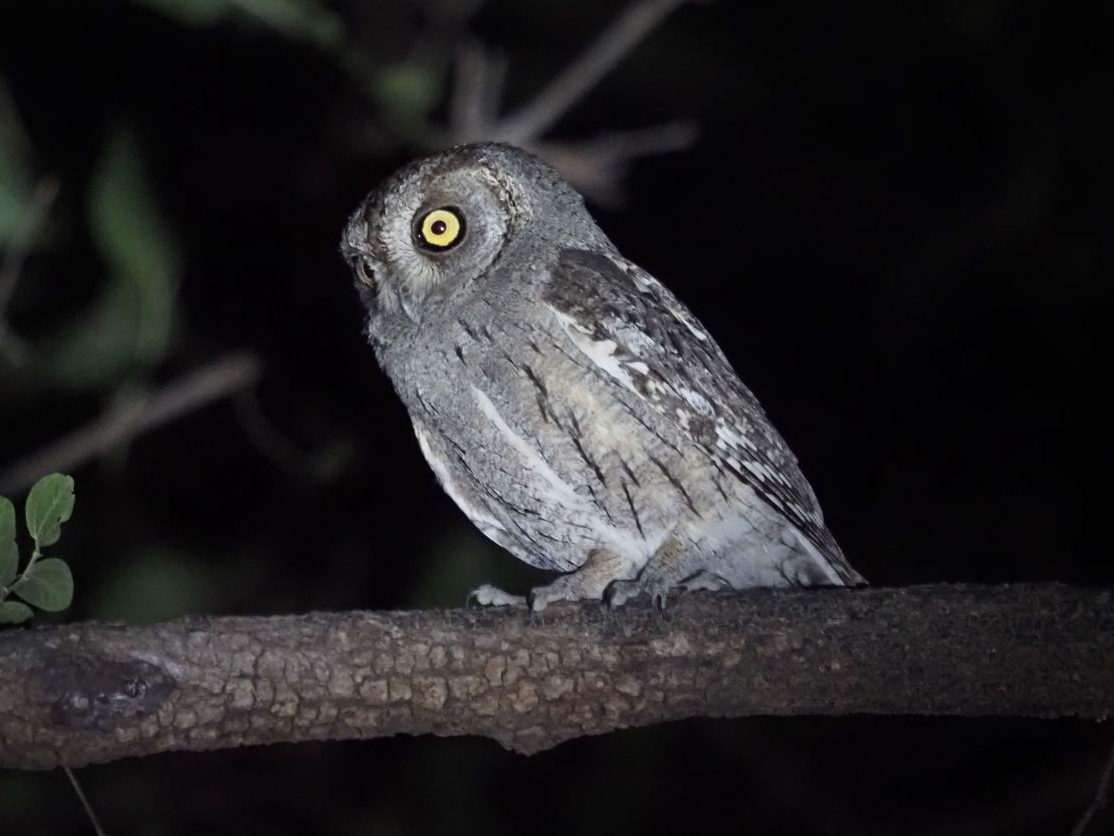
Day 7. After 3 days of strong winds, we finally woke up in a calm, very promising day! An early start was mandatory today to catch up with our offshore starting North from Salalah. But before arriving to the departing harbour, we did make a stop en route to check some superb reedbeds. Here, at raising, we enjoyed excellent views on 4 Pheasant-tailed Jacanas while feeding on the floating vegetation. 2 Whiskered Terns were patrolling the area, crossing in the air with the many Western Marsh Harriers leaving their roost. These reedbeds are not only refugee for the Harriers, but also for 3 Barn Swallows and hundreds of Common Mynas that were also leaving at that time. A carefully checking of the flocks revealed a Rosy Starling, then 2 more. Later a small flock of 6, 10, 14 and scattered individuals all along with Mynas! At the end, we estimated no less than 42 Rosy Starlings moving out from the reeds!!!
Well, went to the harbour, but had to do a last stop before arriving, an obliging Abdim’s Stork was having a short walk along the road itself, just a mile away from the harbour! Once by the boats, we enjoyed excellent views on Heuglins & Sooty Gulls, and close ups to Western Reef Egrets. The sea was calm, and beyond the typical views on the roosting Black-crowned Night Herons, this offshore provided as a starter magnificent views on a 60+ False Killer Whale pod, and got quite long and close views on these large dolphins!
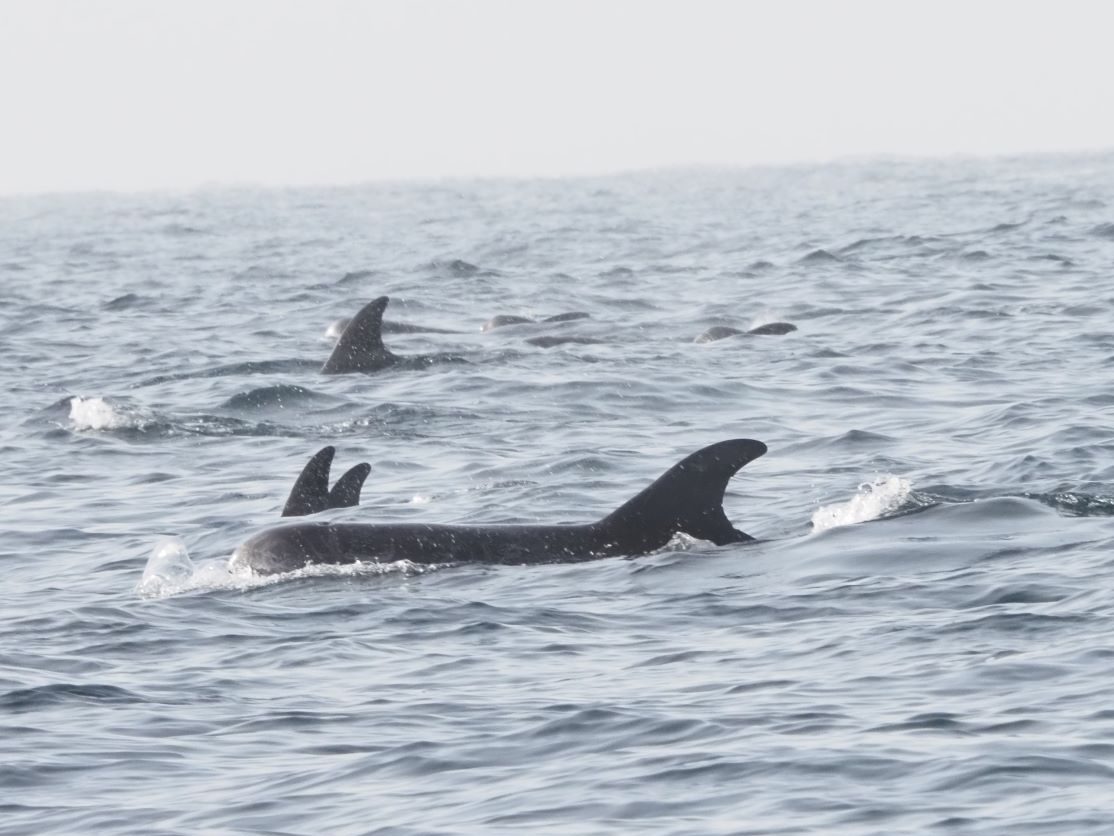
On birds, we did have as many views on Masked Booby as never before. No less than 25 individuals were counted, mainly passing by but also on the water along with Sooty Gulls. Persian Shearwaters were not uncommon, and we all enjoyed really good views in passby birds. After a careful scanning, we finally found 2 Jouanin’s Petrels that, even if didn’t allow us close views, provided excellent comparitions with both Persian & Flesh-footed Shearwaters. When we were coming back, a Leatherhead Sea Turtle emerged in front of boat, allowing a short but good view.
In our way, a pod of Indo-Pacific Bottlenose Dolphins provided really good looks, and a single Red-necked Phalarope was the perfect end for our pelagic!

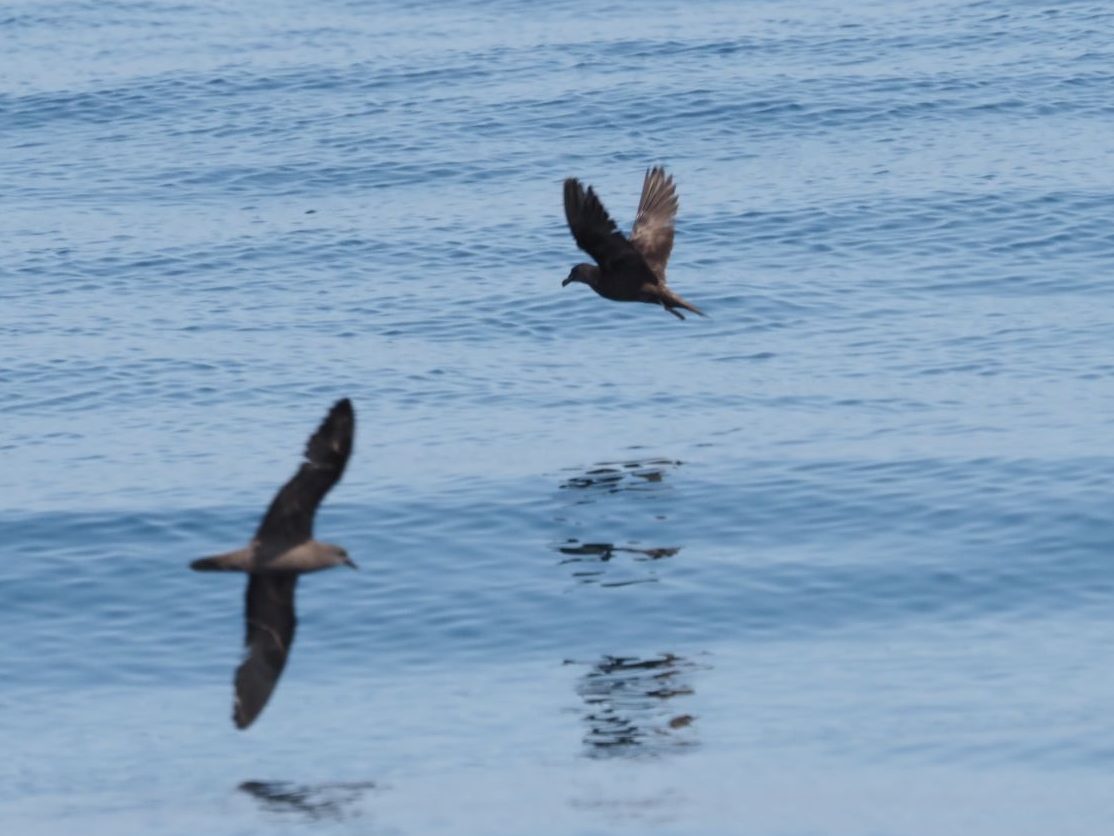
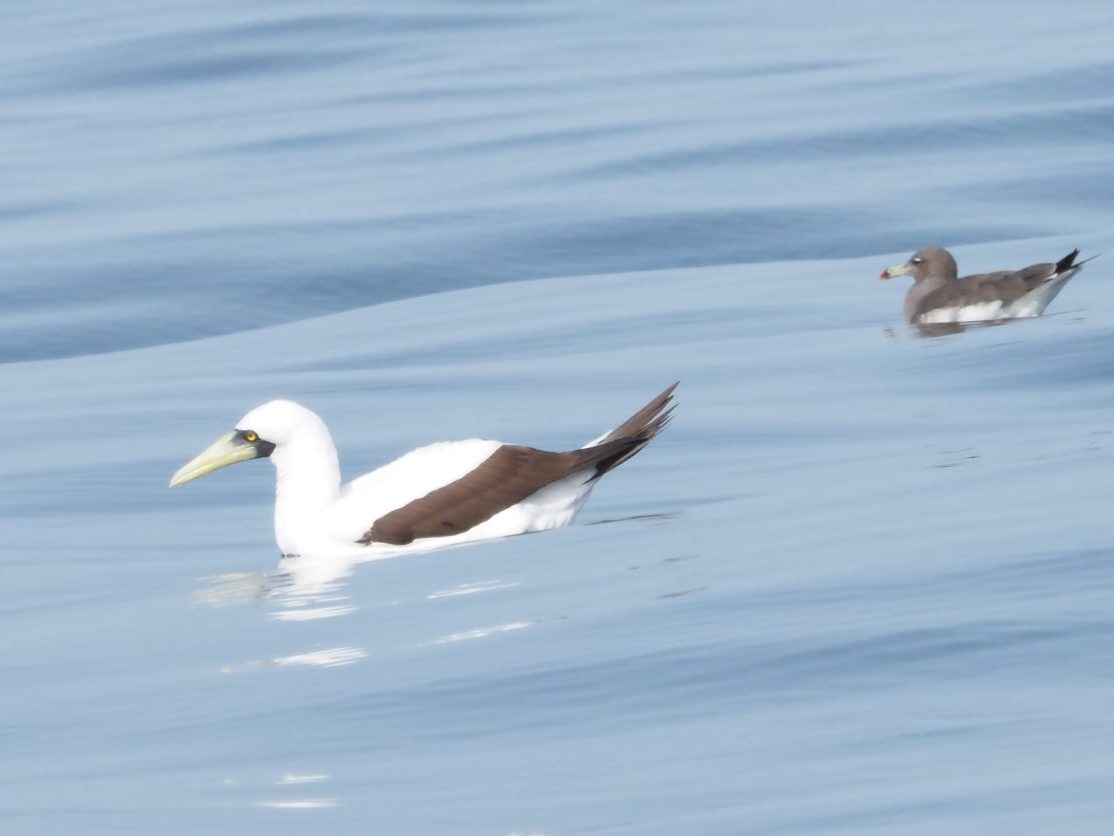
Once on the ground, we came back to the hotel for an early lunch, and after a short break, we drove South to explore some wetlands. Our first stop was to see what we could find in a small river mouth. As usual, it was fithered with waterfowl: Greater Flamingoes, Eurasian Teals, Eurasian Curlews, Black-tailed Godwits, Wigeons but also 5 Eurasian Spoonbills, 17 Garganeys, 28 Greater White-fronted Geese, 5 Terek’s Sandpipers and 1 Red-knobbet Coot (the only one of the tour!).
A second stop was devoted to do some sea watching. It didn’t take long to see our first targets: large flocks of Socotra Cormorants emerged from the see, flying in dense formations towards South. 1, 2, 3, 4 flocks, each one numbering 100 to 200 individuals! Around, tens and tens of terns (Lesser Crested but also Greater Crested, Sandwich and Common) and 5-7 Brown Bobbies with some “close” views.
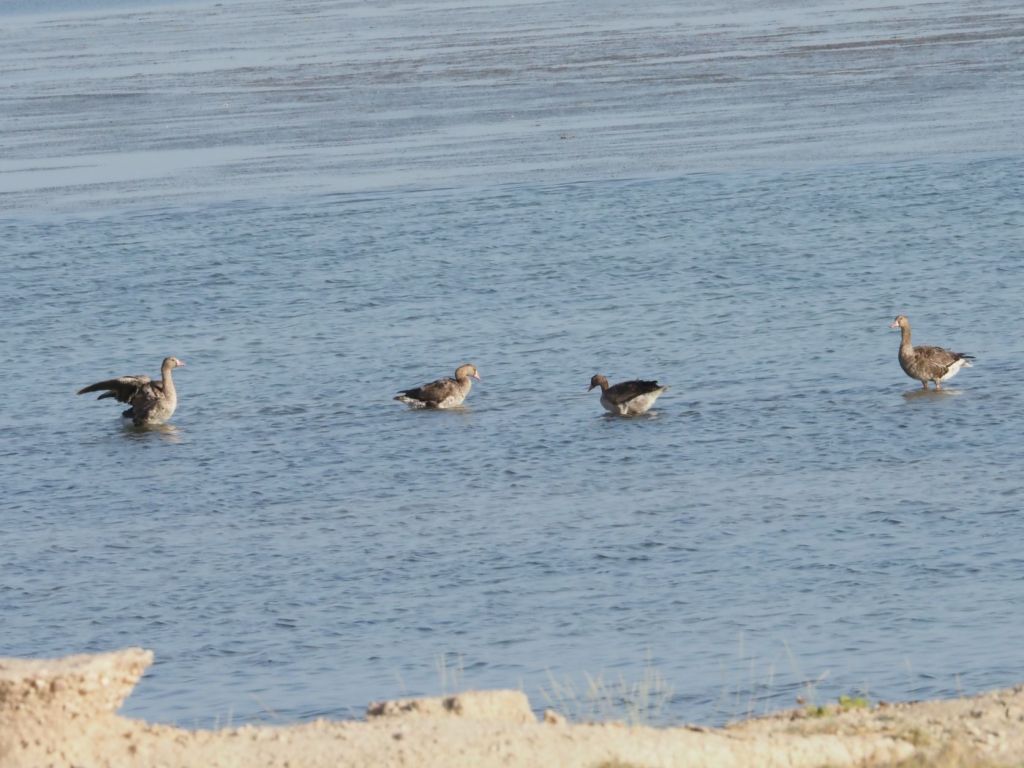
To end the day, we drove inland all along a valley. Our purpose was to explore a small wady with some jewels living on them. Only a few minutes after arriving, a Hooded Wheatear appeared in the area, providing really good looks. For the next speciality we had to wait until sunset, but was worth it not only because of the caravans of camels in their way to their resting place, but also (and especially) because of the wonderful views on a hadsome Desert Owl that came out from the darkness. Very satisfied after such a great views, we still had a last surprise in the form of a Eurasian Stone Curlews that appeared under the lights of our van to end the day!!!

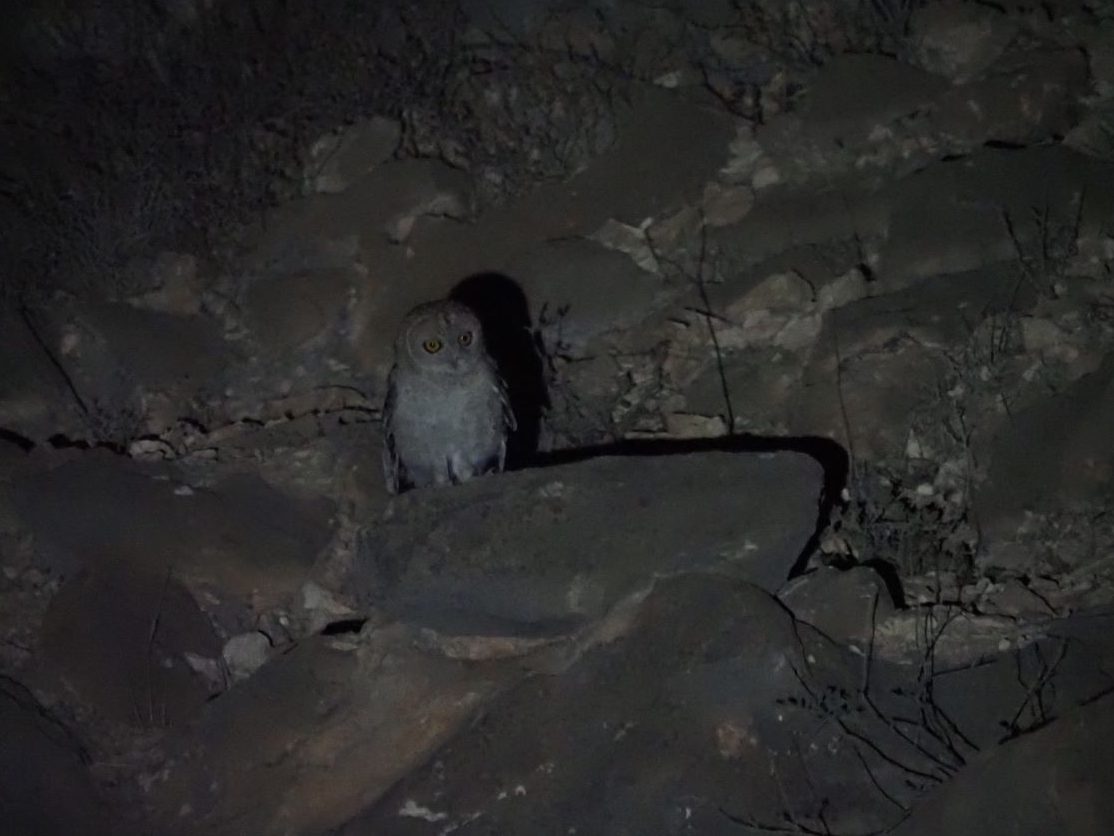
Day 8. Our time in the Dhoffar was ending, and today we were facing a long transfer. But we still had some time for enjoying great birding. Our first stop was inmediatly West of the Dhoffar massif. Here, a short walk in desert like ambient allowed us to contact with two lovely Asian Desert Warblers, a bird that we were missing until that moment!
From there, we drove a bit until arriving to the first of two locations where to explore the wonderful grass fields in this part of the country. Our first stop didn’t produce much our of Yellow Wagtails until 1 male Amur Falcon just appeared in front of us!! This is an amazing falcon, quite similar to Red-footed Falcon. It nests in Central Asia and overwinters in Southern Africa. In Oman it is a scarce migratory and winter speciality, always pretty scarce!
Our second location, only 40 minutes away from the first one, offered us 3 Namaqua Doves, 2 Pallid Harriers, small flock of Bimaculated Larks and 4 Greater Hoopoe Larks.
After lunch, we just finished our transfer, reaching Duqm well before dinner.
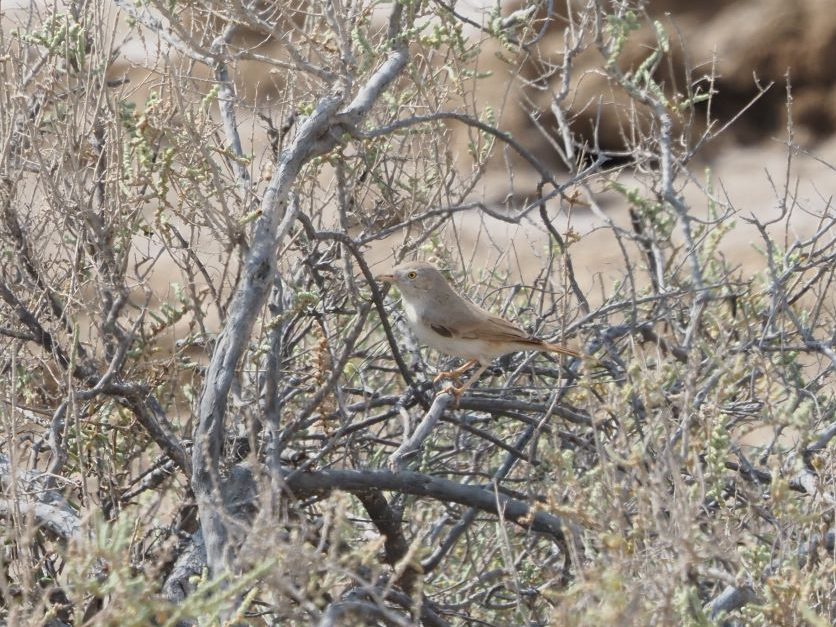
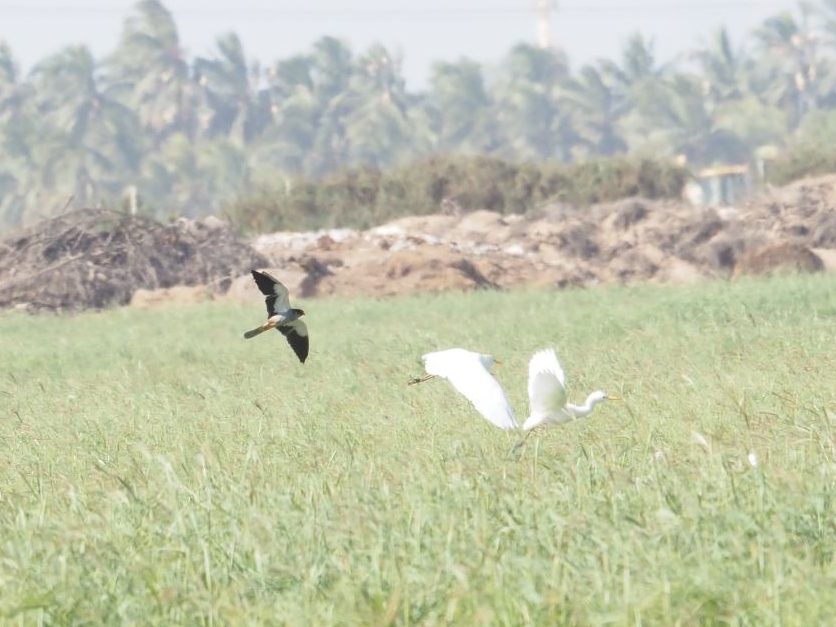

Day 9. This day was devoted to enjoy the massive tydal planes around Masirah Island. Here, a section of coast extending for more than 50 miles, it is thought to be the main wintering pole for waders in Arabia with 1 milion birds estimated!
But before reaching this Eden, we had to do a stop en route. A small wady, usually totally dry, had water! Stop and check. Desert Wheatear and Levant Shrikes were noted, also 3 Citrine Wagtails and an interesting flock of 23 Wood Sandpipers were feeding in the stream along with 6 Temminck’s Stints. While checking for something else, 4 flocks of Chestnut-bellied Sandgrouses passed over us. Two of them stopped up in the stream, but we could not located on the ground.
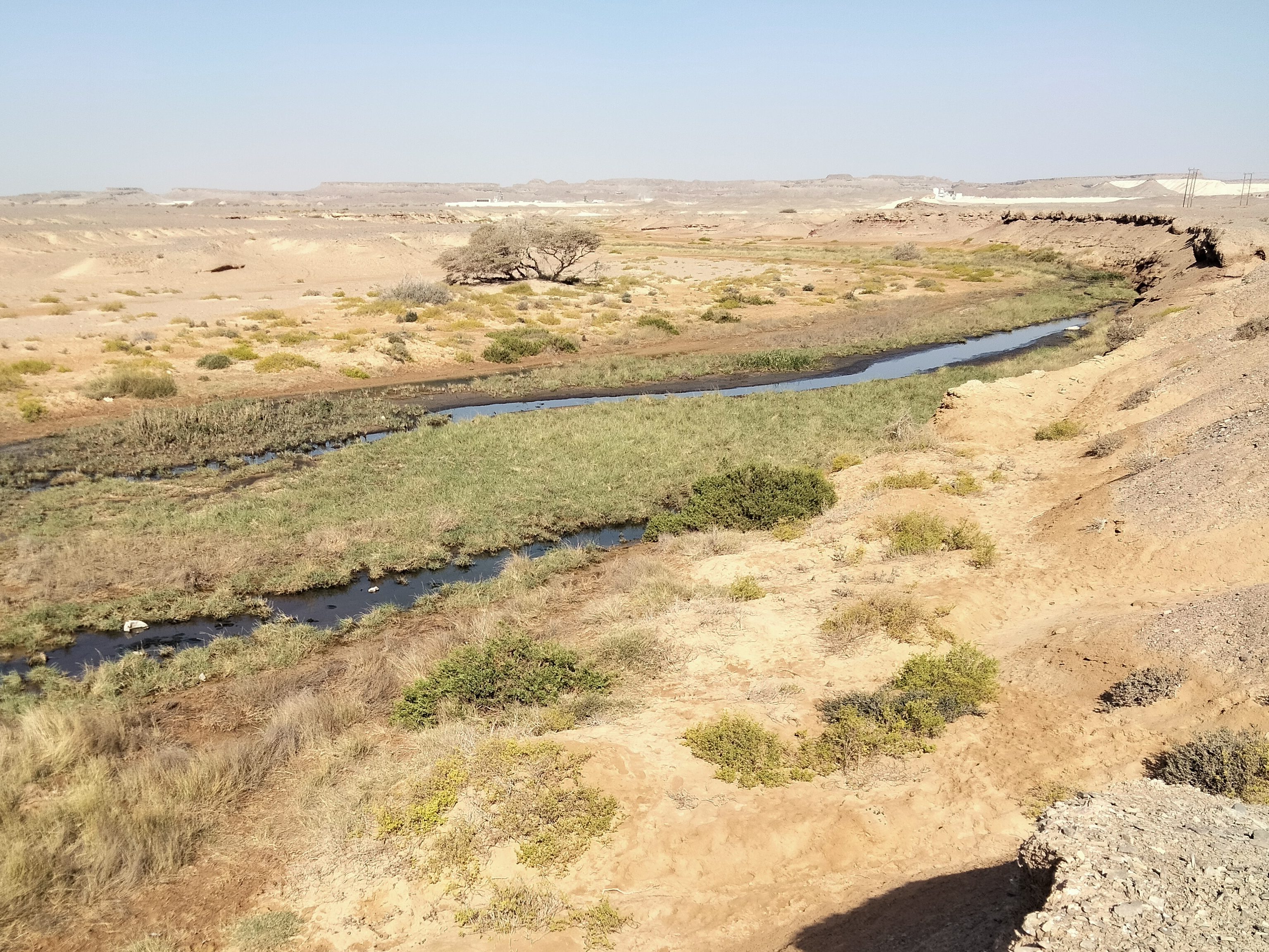
Almost two hours of road separate Duqm from our secret corner for Crab Plovers. When arrived, it was late morning. A large mudflat was in front of us, and large amounts of waders were feeding on it. Here we had many Curlew Sandpipers feeding along Little Stints, Dunlins and some Sanderlings. Both Lesser Sandplover and Greenshanks were common all along, with many Redshanks and Bar-tailed Godwits here and there. We took our time to check some flocks of gulls, but nothing interesting came out this time…

After some scanning, we finally found our first flock of Crab Plovers: 4 individuals appeared in the distance! After some waiting, more and more Crab Plovers were arriving, totalling 47 in the best of our accounts. We really had great views on these massive birds, walking in the mud or having small arguments with the very common Western Reef Egrets!
In the afternoon, we moved 30 miles to the South to check a different spot. There, again by the mudflats, we were surprised to find 4 Spotted Redshanks (our only 4 of the tour!), but also 4 handsome Saunder’s Terns fishing in front of us at close range, all of them showing the well defined outer black primaries. In the mud, 2 Broad-billed Sandpipers were found and allowed good views along with Dunlins and Curlew Sandpipers. But the very best of the stop were the 4+ Great Knots that were roosting along with Bar-tailed Godwits. Even if far away, the birds allowed good views on their unmistakable bill when one of them decide to have a look around.

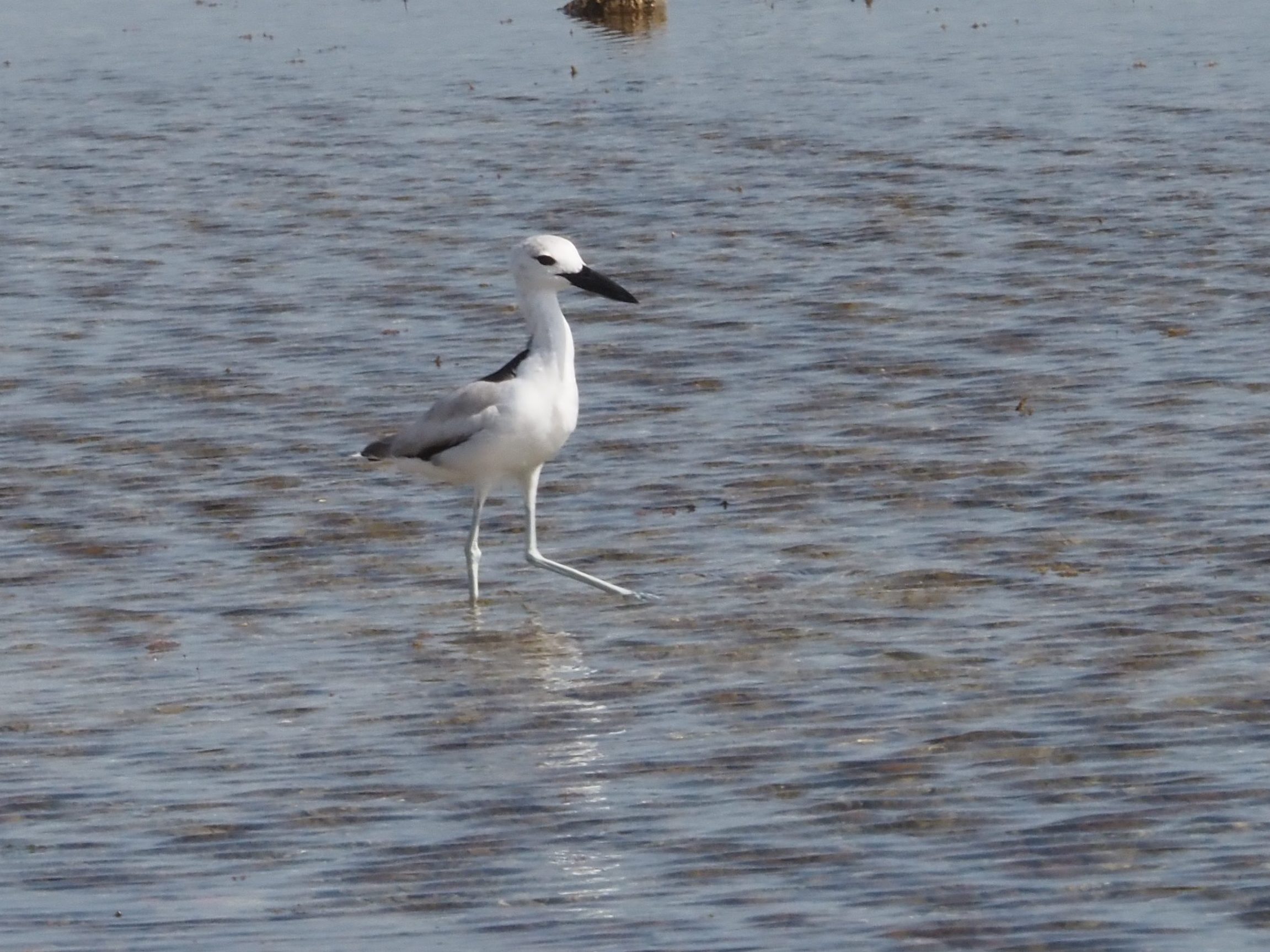
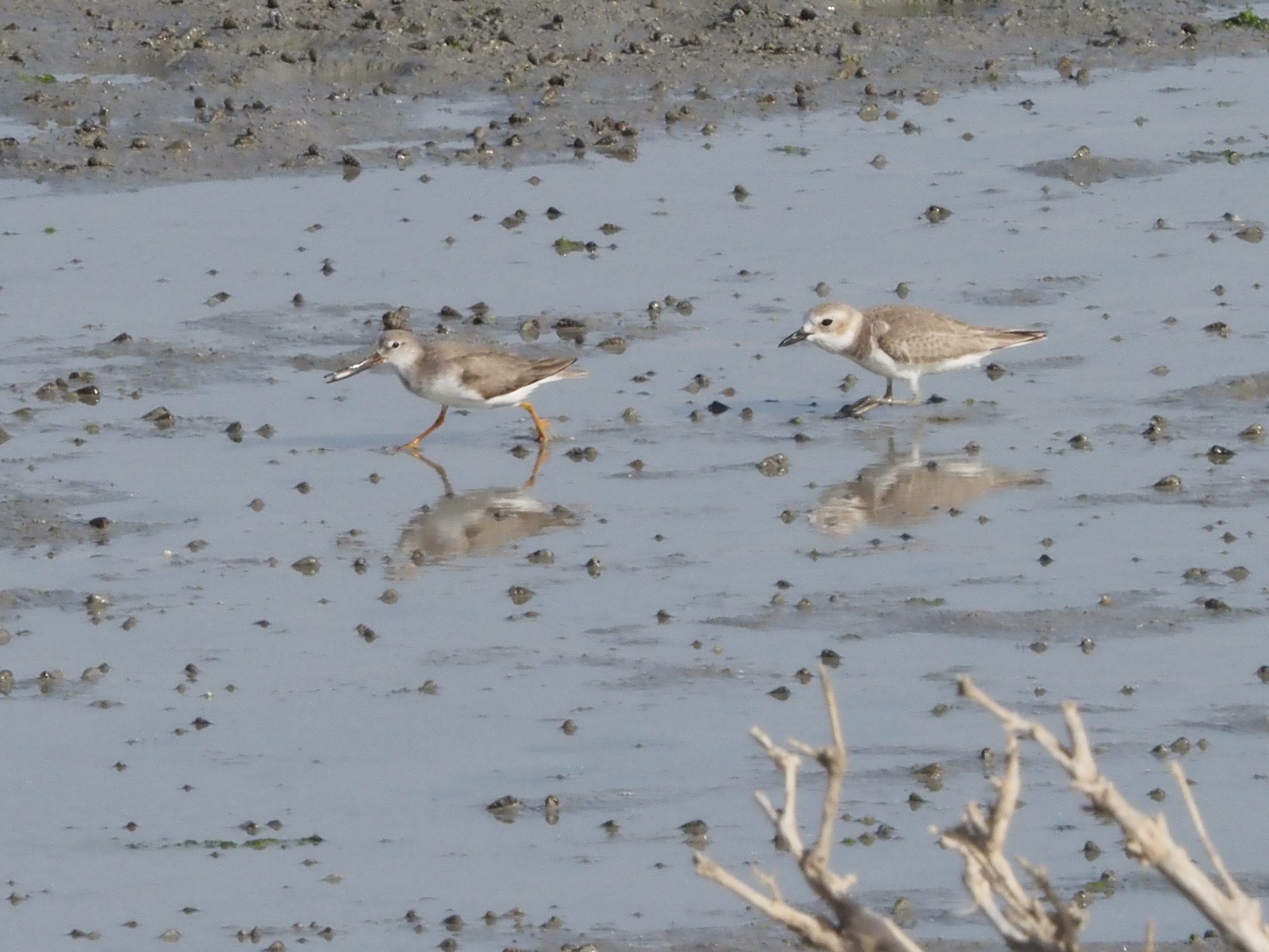
Day 10. Last full day of the tour. A sunny, calm day to enjoy our last birding. During the morning we had a pair of stops expecting to improve the views that we had on Lappet-faced Vulture during the second day of the trip. Unfortunately, we failed to find out any of them. Instead, we had 3 Crested Honey Buzzards, Egyptian Vulture and lovely views on typical Northern species including Arabian Bee-eaters, Indian Rollers, Delicate Prinias and Indian Silverbills.
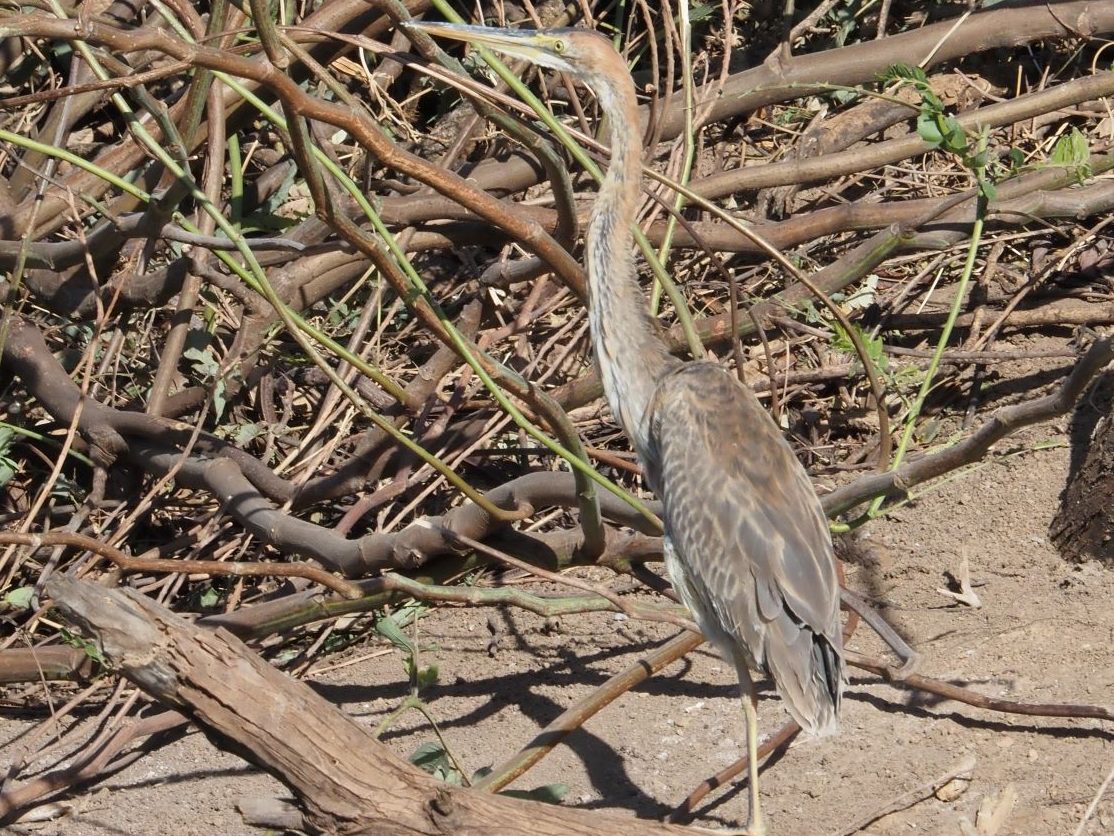
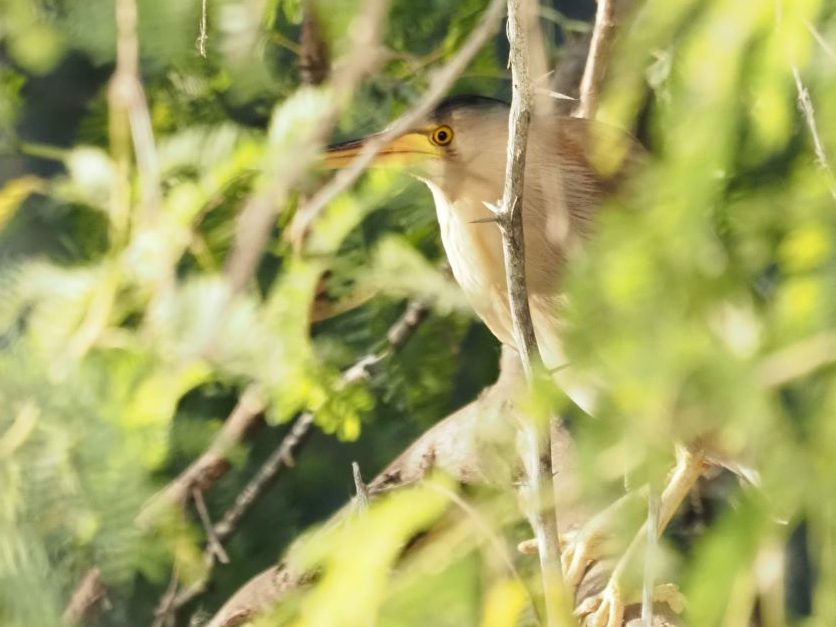
Once in Muscat, we still had a pair of hours to explore Al-Qrm Park before going to the airport, so we enjoyed several White-eared Bulbuls, Bluethroat, Eurasian Whimbrels and Pallid Swifts in close views as they were coming down to drink water in a stream. But the real treat of the visit was a handsome male Yellow Bittern that appeared that showed up well inside a mimosa tree that was by the water. A wonderful addition to our list and a great way to end our tour to Oman.
After sunset, we still had time for a final stop by one of the most amazing, smart and surprising mosques in the city. A good way to say goodbye to this country, that hosts a gorgeous array of birdlife, and where every single stop can produce great surprises!
See full planing here: https://barcelonabirdingpoint.com/tour-por-pais/oman-link-between-two-continents-2/
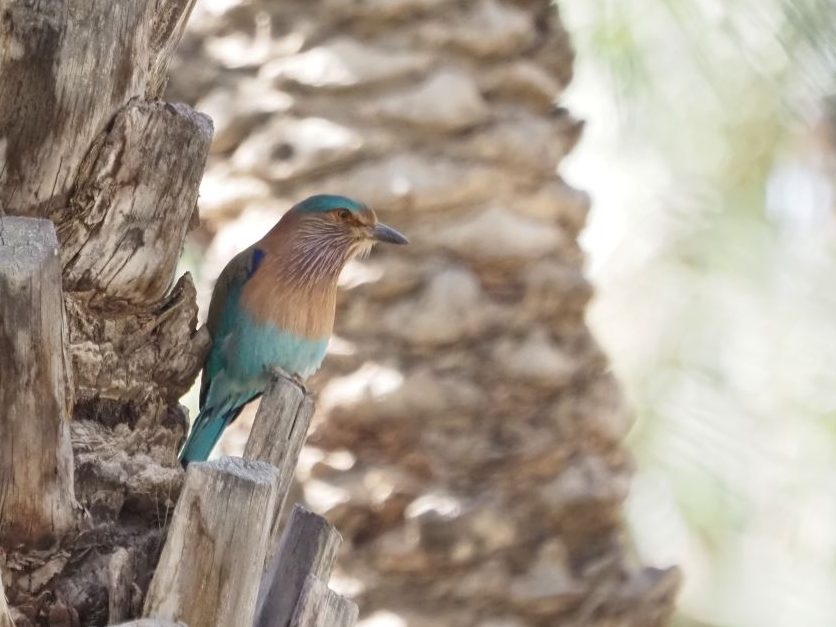
Species of bird seen along the tour:
- 1. Arabian Partridge (Alectoris melanocephala)
- 2. Sand Partridge (Ammoperdix heyi)
- 3. Grey Francolin (Francolinus pondicerianus)
- 4. White-fronted Goose (Anser albifrons)
- 5. Cotton Pygmy Goose (Nettapus coromandelianus)
- 6. Mallard (Anas platyrhynchos)
- 7. Gadwall (Anas strepera)
- 8. Eurasian Wigeon (Anas penelope)
- 9. Pintail (Anas acuta)
- 10. Eurasian Teal (Anas crecca)
- 11. Garganey (Spatula querquedula)
- 12. Northern Shoverler (Spatula clypeata)
- 13. Common Pochard (Aythya ferina)
- 14. Ferruginous Duck (Aythya nyroca)
- 15. Tutfed Duck (Aythya fuligula)
- 16. Pallid Swift (Apus pallidus)
- 17. Chestnut-bellied Sandgrouse (Pterocles exustus)
- 18. Crowned Sandgrouse (Pterocles coronata)
- 19. Spotted Sandgrouse (Pterocles senegallus)
- 20. Feral Dove (Columba livia)
- 21. Eurasian Collared Dove (Streptopelia decaocto)
- 22. Laughing Dove (Streptopelia senegalensis)
- 23. Namaqua Dove (Oena capensis)
- 24. Bruce’s Gree Pigeon (Treron waalia)
- 25. Common Moorhen (Gallinula chloropus)
- 26. Eurasian Coot (Fulica atra)
- 27. Red-knobbet Coot (Fulica cristata)
- 28. Little Grebe (Tachybaptus ruficollis)
- 29. Greater Flamingo (Phoenicopterus roseus)
- 30. Eurasian Stone Curlew (Burhinus oedicnemus)
- 31. Spotted Thick-knee (Burhinus capensis)
- 32. Eurasian Oystercatcher (Haematopus ostralegus)
- 33. Crab Plover (Dromas ardeola)
- 34. Black-winged Stilt (Himantopus himantopus)
- 35. Pheasant-tailed Jacana (Hydrophaisanus chirurgus)
- 36. Red-wattled Lapwing (Vanellus indicus)
- 37. Pacific Golden Plover (Pluvialis fulva)
- 38. Grey Plover (Pluvialis squatarola)
- 39. Common Ringed Plover (Charadrius hiaticula)
- 40. Little Ringed Plover (Charadrius dubius)
- 41. Kentish Plover (Charadrius alexandrinus)
- 42. Lesser Sand Plover (Charadrius mongolus)
- 43. Greater Sand Plover (Charadrius leschenaultii)
- 44. Common Snipe (Gallinago gallinago)
- 45. Pin-tailed Snipe (Gallinago stenura)
- 46. Black-tailed Godwit (Limosa limosa)
- 47. Bar-tailed Godwit (Limosa lapponica)
- 48. Eurasian Whimbrel (Numenius phaeopus)
- 49. Eurasian Curlew (Numenius arquata)
- 50. Spotted Redshank (Tringa erythropus)
- 51. Common Redshank (Tringa totanus)
- 52. Marsh Sandpiper (Tringa stagnatilis)
- 53. Greenshank (Tringa nebularia)
- 54. Green Sandpiper (Tringa ochropus)
- 55. Wood Sandpiper (Tringa glareola)
- 56. Terek’s Sandpiper (Xenus cinereus)
- 57. Common Sandpiper (Actitis hypoleucos)
- 58. Ruddy Turnstone (Arenaria interpres)
- 59. Broad-billed Sandpiper (Limicola falcinellus)
- 60. Sanderling (Calidris alba)
- 61. Little Stint (Calidris minuta)
- 62. Temminck’s Stint (Calidris temminckii)
- 63. Dunlin (Calidris alpina)
- 64. Curlew Sandpiper (Calidris ferruginea)
- 65. Great Knot (Calidris tenuirostris)
- 66. Ruff (Calidris pugnax)
- 67. Red-necked Phalarope (Phalaropus lobatus)
- 68. Slender-billed Gull (Chroicocephalus genei)
- 69. Black-headed Gull (Chroicocephalus ridibundus)
- 70a. Heughlin’s Gull (Larus fuscus heuglini)
- 70b. Steppe Gull (Larus fuscus barabensis)
- 71. Caspian Gull (Larus cachinnans)
- 72. Palla’s Gull (Ichthyaetus ichthyaetus)
- 73. Sooty Gull (Ichthyaetus hemprichii)
- 74. Caspian Tern (Hydroprogne caspia)
- 75. Greater Crested Tern (Thalasseus bergii)
- 76. Lesser Crested Tern (Thalasseus bengalensis)
- 77. Sandwich Tern (Thalasseus sandvicensis)
- 78. White-cheeked Tern (Sterna repressa)
- 79. Common Tern (Sterna hirundo)
- 80. Gull-billed Tern (Gelochelidon nilotica)
- 81. Saunder’s Tern (Sternula saundersi)
- 82. Whiskered Tern (Chlidonias hybridus)
- 83. White-winged Black Tern (Chlidonias leucopterus)
- 84. Persian Shearwater (Puffinus persicus)
- 85. Flesh-footed Shearwater (Ardenna carneipes)
- 86. Jouanin’s Petrel (Bulweria fallax)
- 87. Abdim’s Stork (Ciconia abdimii)
- 88. White Stork (Ciconia ciconia)
- 89. African Openbill (Anastomus lamelligerus)
- 90. Masked Booby (Sula dactylara)
- 91. Brown Booby (Sula leucogaster)
- 92. Great Cormorant (Phalacrocorax carbo)
- 93. Socotra Cormorant (Phalacrocorax nigrogularis)
- 94. African Sacred Ibis (Threskiornis aethiopicus)
- 95. Glossy Ibis (Plegadis falcinellus)
- 96. African Spoonbill (Platalea alba)
- 97. Eurasian Spoonbill (Platalea leucorodia)
- 98. Yellow Bittern (Ixobrychus sinensis)
- 99. Striated Heron (Butorides striata)
- 100. Squacco Heron (Ardeola ralloides)
- 101. Indian Pond Heron (Ardeola grayii)
- 102. Western Cattle Egret (Bubulcus ibis)
- 103. Black-crowned Night Heron (Nycticorax nycticorax)
- 104. Purple Heron (Ardea purpurea)
- 105. Grey Heron (Ardea cinerea)
- 106. Intermediate Heron (Ardea intermedia)
- 107. Western Reed Egret (Egretta gularis)
- 108. Little Egret (Egretta garzetta)
- 109. Great White Heron (Agrodiaetus albus)
- 110. Dalmatian Pelican (Pelecanus crispus)
- 111. Egyptian Vulture (Neophron percnopterus)
- 112. Lappet-faced Vulture (Torgos tracheliotos)
- 113. Western Osprey (Pandion haliaetos)
- 114. Crested Honey Buzzard (Pernis ptilorhynchus)
- 115. Greater Spotted Eagle (Clanga clanga)
- 116. Steppe Eagle (Aquila nipalensis)
- 117. Eastern Imperial Eagle (Aquila heliaca)
- 118. Bonelli’s Eagle (Aquila fasciata)
- 119. Booted Eagle (Aquila pennata)
- 120. Short-toed Snake Eagle (Circaetus gallicus)
- 121. Western Marsh Harrier (Circus aeruginosus)
- 122. Pallid Harrier (Circus macrourus)
- 123. Long-legged Buzzard (Buteo rufinus)
- 124. Western Barn Owl (Tyto alba)
- 125. Arabian Scops Owl (Otus pamelae)
- 126. Desert Owl (Strix hadorami)
- 127. Eurasian Hoopoe (Upupa epops)
- 128. Indian Roller (Coracias benghalensis)
- 129. Common Kingfisher (Alcedo atthis)
- 130. Arabian Bee-eater (Merops
- 131. Eurasian Wryneck (Jynx torquilla)
- 132. Common Kestrel (Falco tinnunculus)
- 133. Amur Falcon (Falco amurensis)
- 134. Alexandrine Parakeet (Psittacula eupatria)
- 135. Rose-ringed Parakeet (Pstittacula krameri)
- 136. Black-crowned Tchagra (Tchagra senegalensis)
- 137. Masked Shrike (Lanius nubicus)
- 138. Isabelline Shrike (Lanius isabellinus)
- 139. Turkestan Shrike (Lanius phoenicuroides)
- 140. Levant Grey Shrike (Lanius meridionalis aucheri)
- 141. African Paradise Flycatcher (Tersiphone viridis)
- 142. White-eared Bulbul (Pycnonotus leucotis)
- 143. Red-vented Bulbul (Pycnonotus cafer)
- 144. White-spectacled Bulbul (Pynonotus xanthopygos)
- 145. House Crow (Corvus splendens)
- 146. Brown-necked Raven (Corvus ruficollis)
- 147. Fan-tailed Raven (Corvus rhidipurus)
- 148. Greater Hoopoe-Lark (Alaemon alaudipes)
- 149. Black-crowned Sparrow-lark (Eremopterix nigriceps)
- 150. Arabian Lark (Eremolauda eremodites)
- 151. Crested Lark (Galerida cristata)
- 152. Bimaculated Lark (Melanocorypha bimaculata)
- 153. Pale Crag Martin (Ptynoprogne obsoleta)
- 154. Barn Swallow (Hirundo rustica)
- 155. Graceful Prinia (Prinia gracilis)
- 156. Delicate Prinia (Prinia lepida)
- 157. Common Chiffchaff (Phylloscopus collybita)
- 158. Siberian Chiffchaff (Phylloscopus tristis)
- 159. Plain Leaf Warbler (Phylloscopus neglectus)
- 160. Hume’s Leaf Warbler (Phylloscopus humei)
- 161. (Caucasian) Mountain Warbler (Phylloscopus sindianus lorenzii)
- 162. Eastern Olivaceous Warbler (Iduna pallida)
- 163. Great Reed Warbler (Acrocephalus arundinaceus)
- 164. Clamorous Reed Warbler (Acrocephalus stentoreus)
- 165. Streaked Scrub Warbler (Scotocerca inquieta)
- 166. Asian Desert Warbler (Curruca nana)
- 167. Lesser Whitethroat (Curruca curruca)
- 168. Eastern Orphean Warbler (Curruca crassirostris)
- 169. Arabian Warbler (Curruca leucomelaena)
- 170. Ménétriés’s Warbler (Curruca mystacea)
- 171. Abyssinian White-eye (Zosterops abyssinicus)
- 172. Common Myna (Acridotheres tristis)
- 173. Rosy Starling (Pastor roseus)
- 174. Tristam’s Starling (Onychognathus tristamii)
- 175. Song Thrush (Turdus philomelos)
- 176. Blue Rock Thrush (Monticola solitarius)
- 177. Bluethroat (Luscinia svecica)
- 178. Black Redstart (Phoenicurus ochruros)
- 179. Siberian Stonechat (Saxicola maurus)
- 180. Isabelline Wheatear (Oenanthe isabellina)
- 181. Desert Wheatear (Onenanthe deserti)
- 182. Blackstart (Oenanther melanura)
- 183. Arabian Wheatear (Oenanthe lugentoides)
- 184. Variable Wheatear (Oenanthe picata)
- 185. Hume’s Wheatear (Oenanthe albonigra)
- 186. Hooded Wheatear (Oenanthe monacha)
- 187. Persian Wheatear (Oenanthe chrysopygia)
- 188. Nile Valley Sunbird (Hedydipna metallica)
- 189. Palestine Sunbird (Cinnyris osea)
- 190. Arabian Sunbird (Cinnyris hellmayri)
- 191. Purple Sunbird (Cinnyris asiaticus)
- 192. House Sparrow (Passer domesticus)
- 193. Pale Rockfinch (Carpospiza brachydactyla)
- 194. Rüppell’s Weaver (Ploceus galbula)
- 195. Long-tailed Paradise Whydah (Vidua paradisaea)
- 196. African Silverbill (Euodice cantans)
- 197. Indian Silverbill (Euodice malabarica)
- 198. Citrine Wagtail (Motacilla citreola)
- 199. White Wagtail (Motacilla alba)
- 200. Yellow Wagtail (Motacilla flava)
- 201. Grey Wagtail (Motacilla cinerea)
- 202. Tawny Pipit (Anthus campestris)
- 203. Long-billed Pipit (Anthus similis)
- 204. Richard’s Pipit (Anthus richardi)
- 205. Tree Pipit (Anthus trivialis)
- 206. Arabian Grosbeak (Rhynchostruthus percivali)
- 207. Striolated Bunting (Emberiza striolata)
- 208. Cinnamon-breasted Bunting (Emberiza tahapisi)
List of mammals seen during the trip:
- 1. False Killer Whale (Pseudoorca crassidens)
- 2. Indo-Pacific Bottlenose Dolphin (Tursiops aduncus)
List of reptilians seen during the trip:
- 1. Arabian Chameleon (Chamaeleo arabicus)
- 2. Leatherhead Sea Turtle (Dermochelys coriacea)
- 3. Green Sea Turtle (Chelonia mydas)
List of amphibians seen during the trip:
- 1. Arabian Toad (Bufo arabicus)
